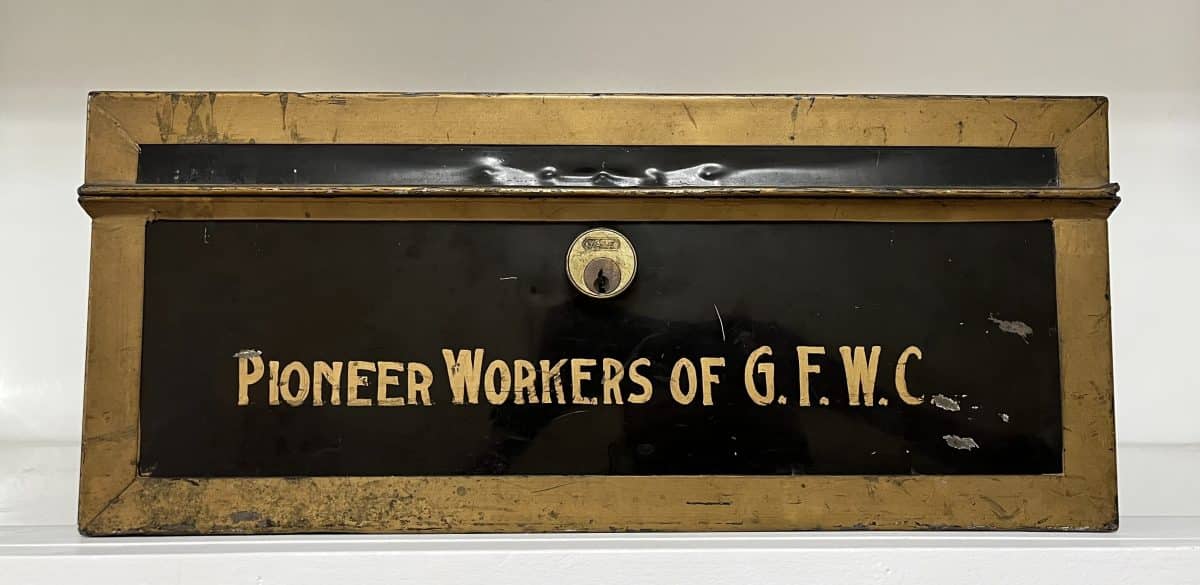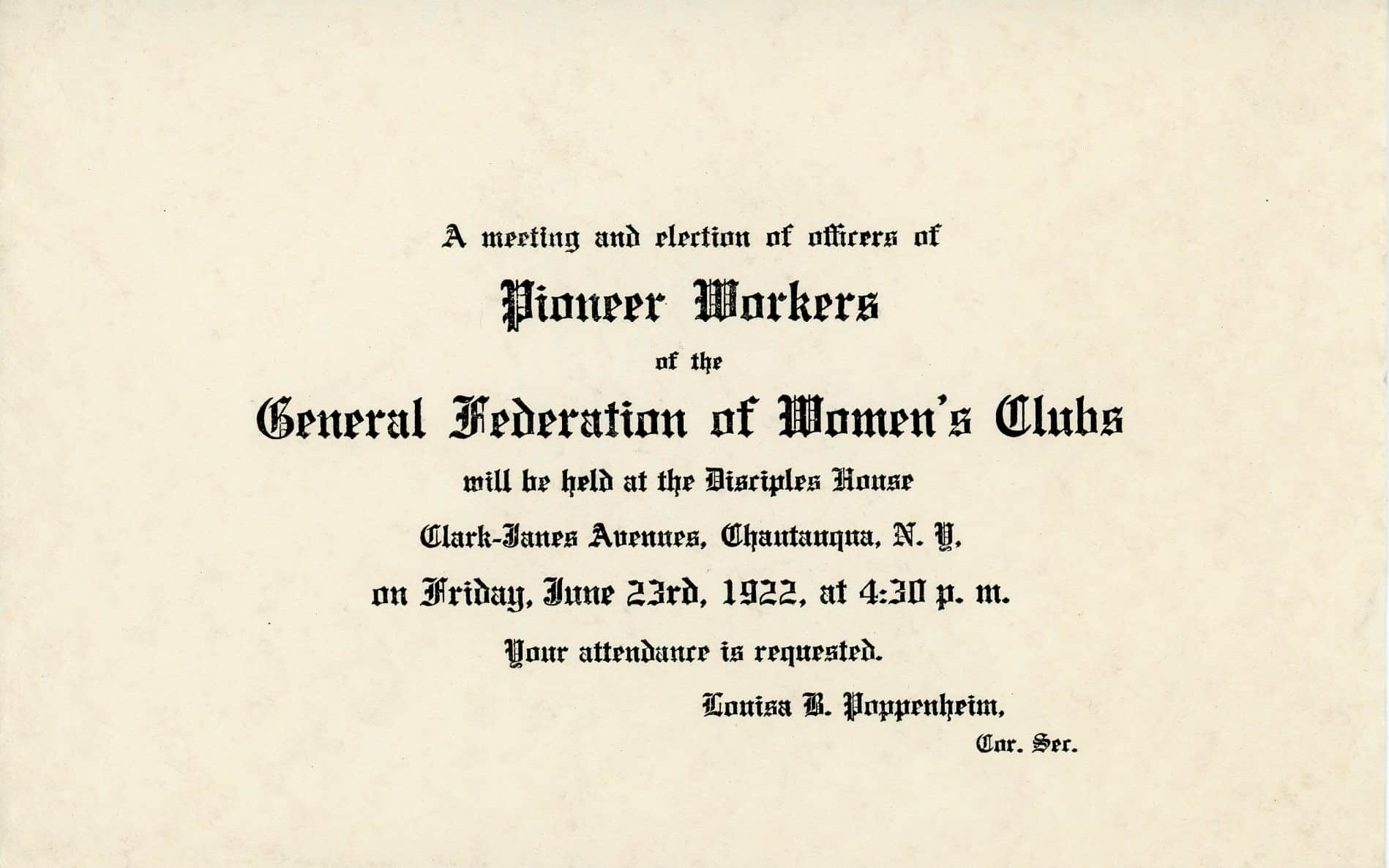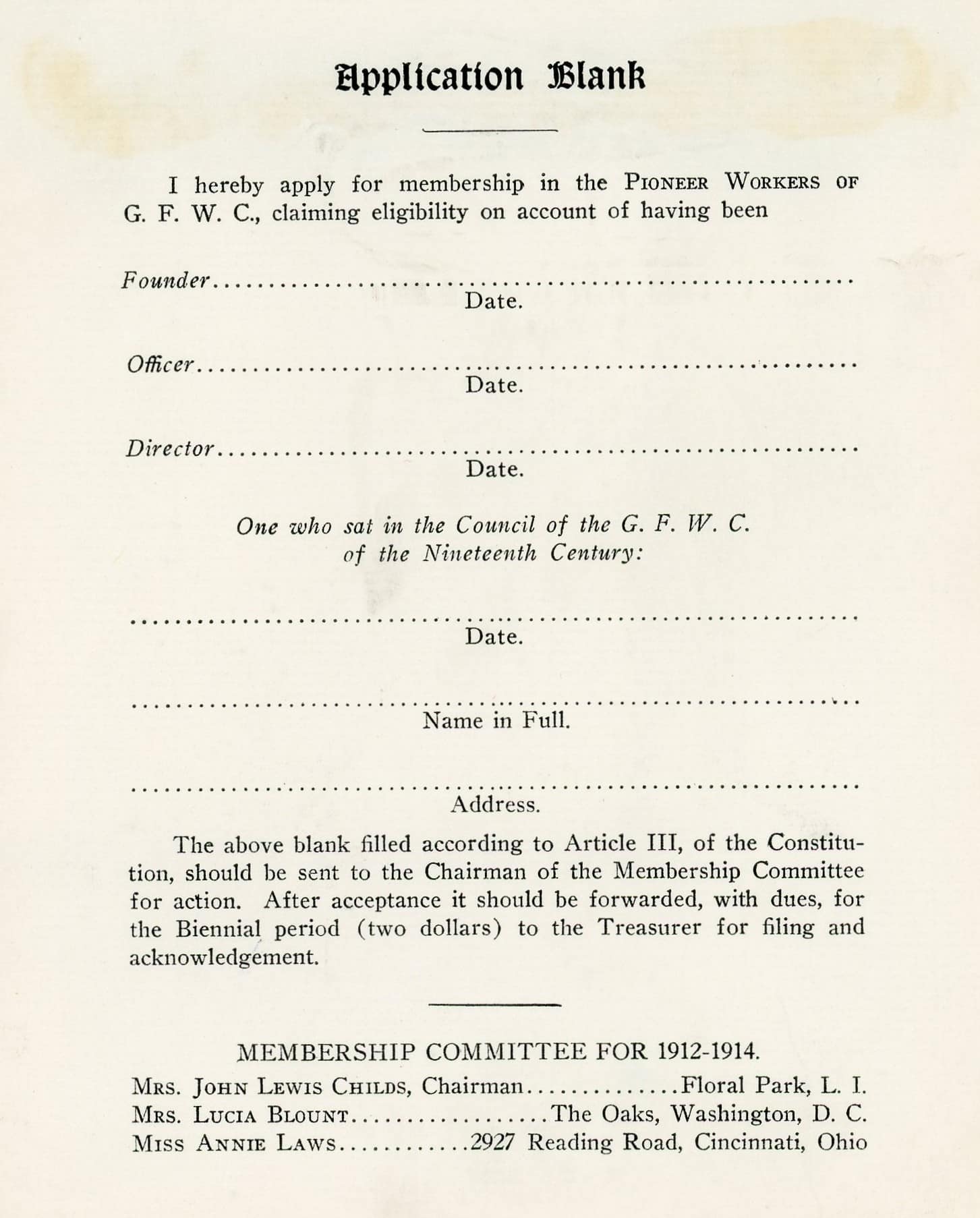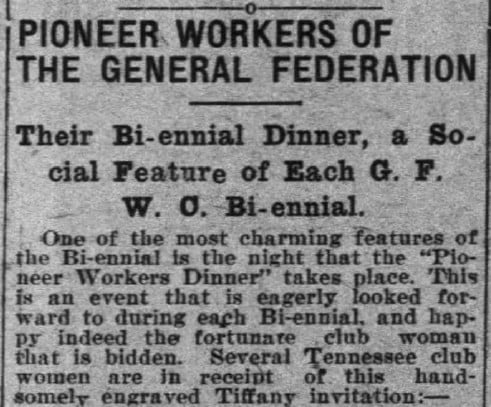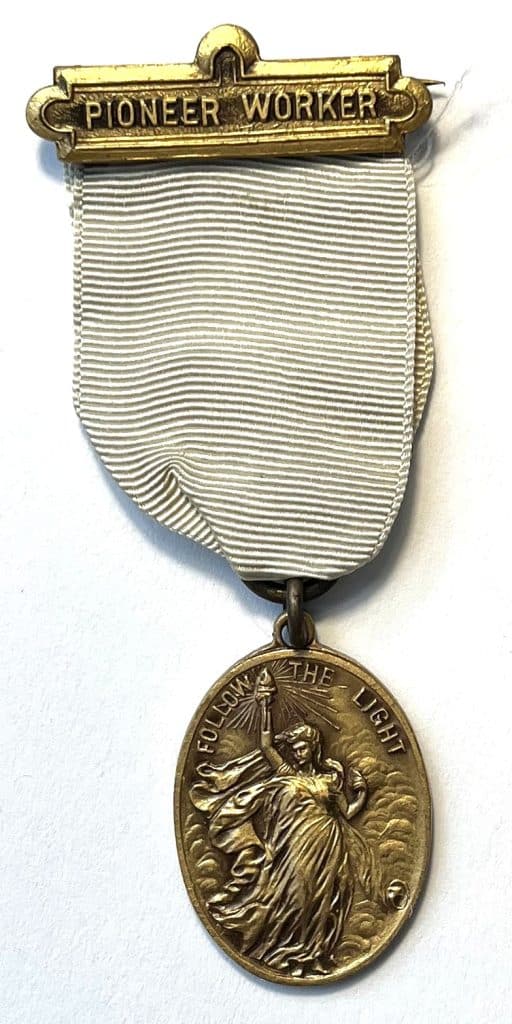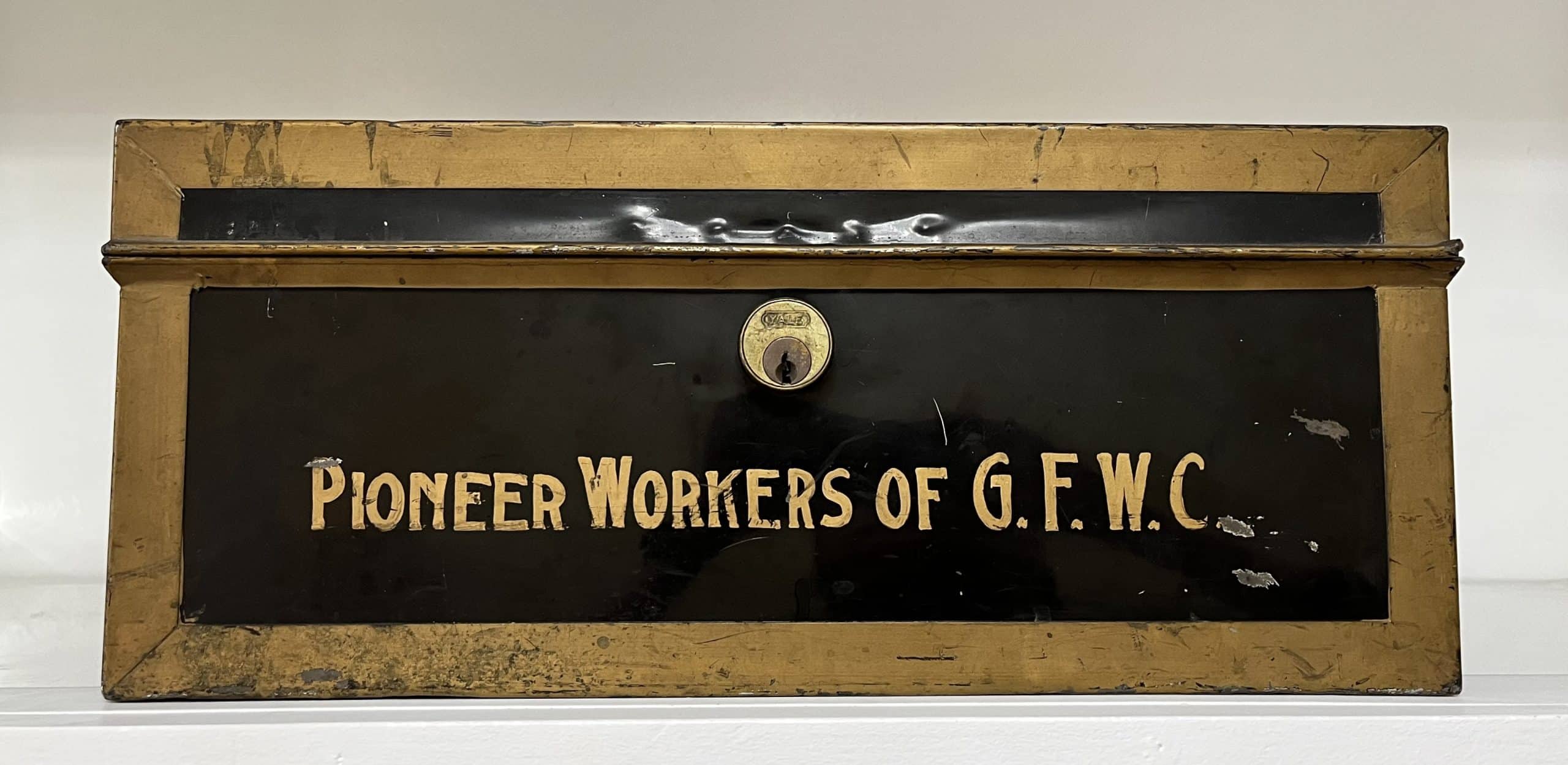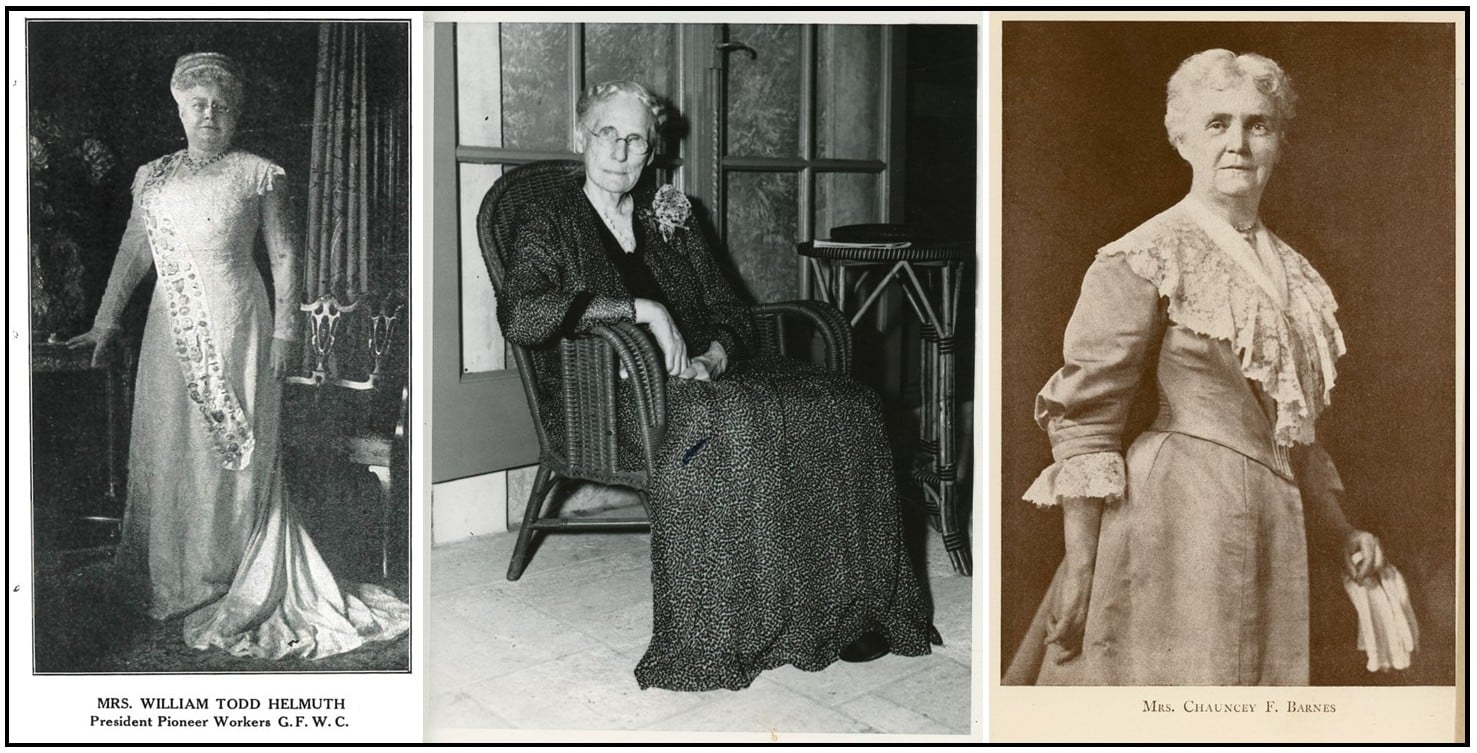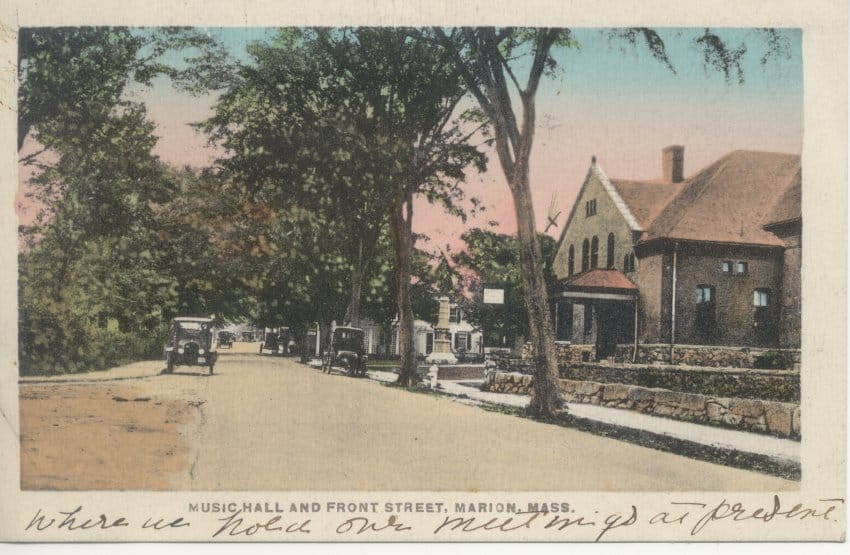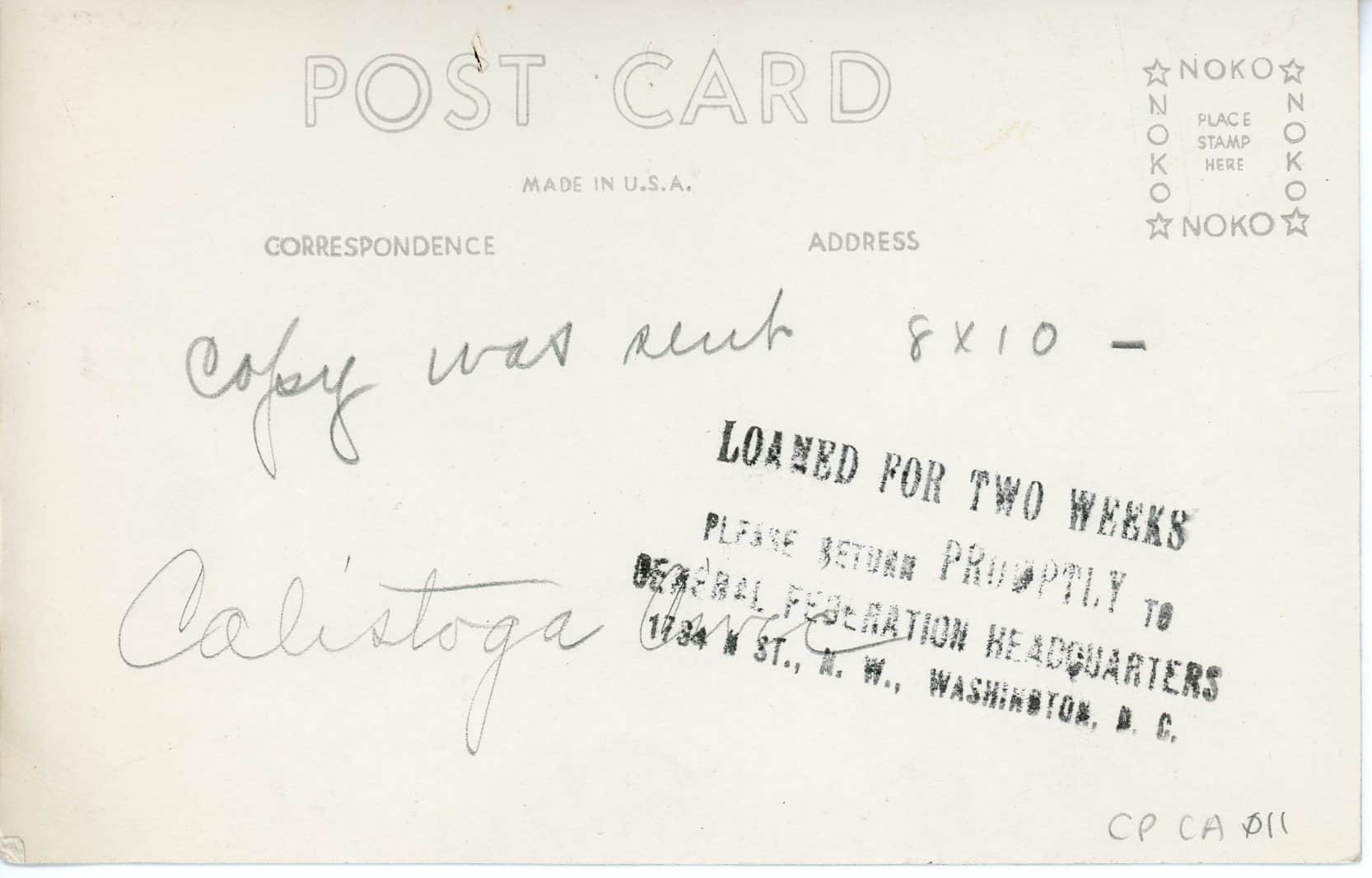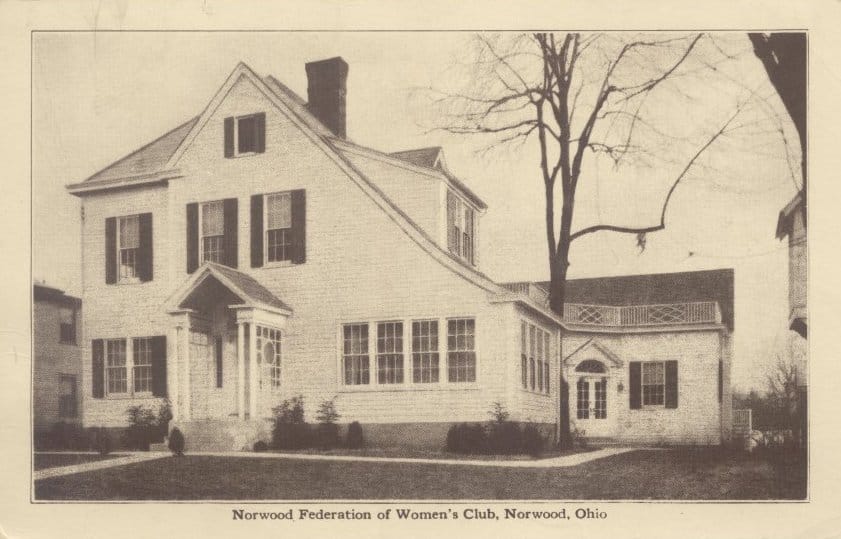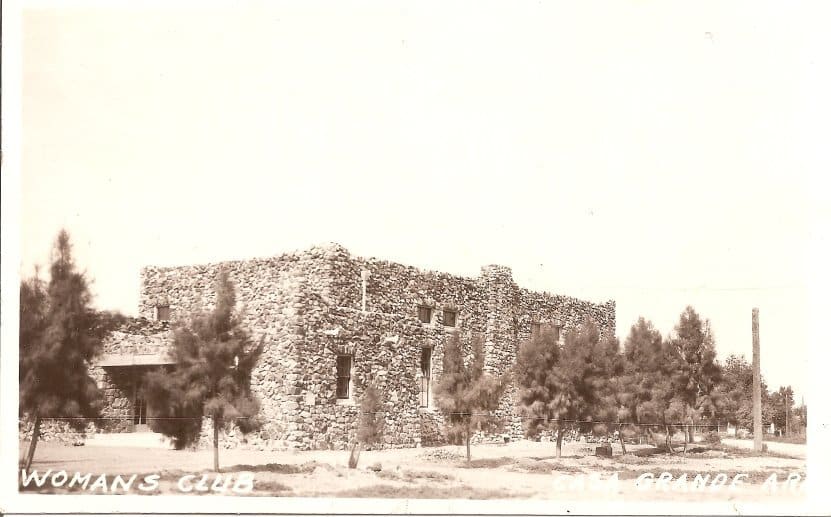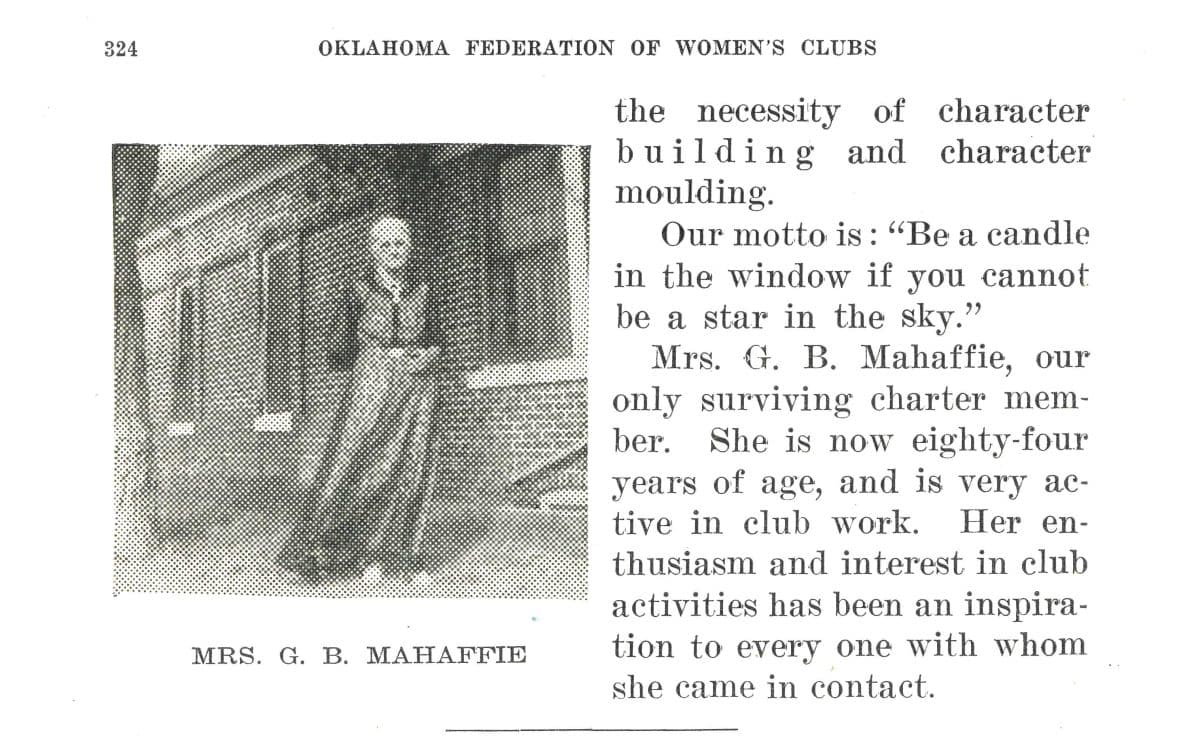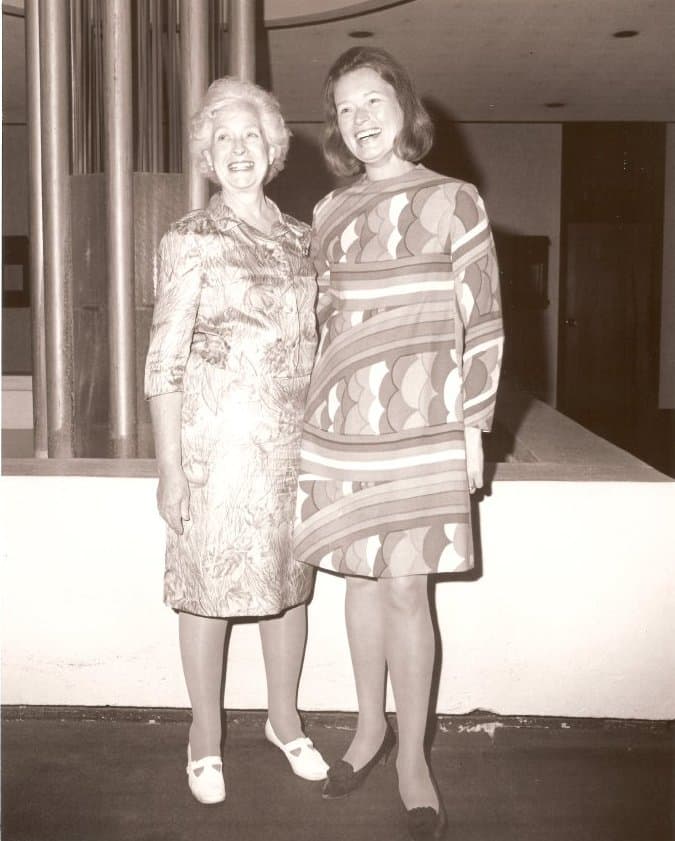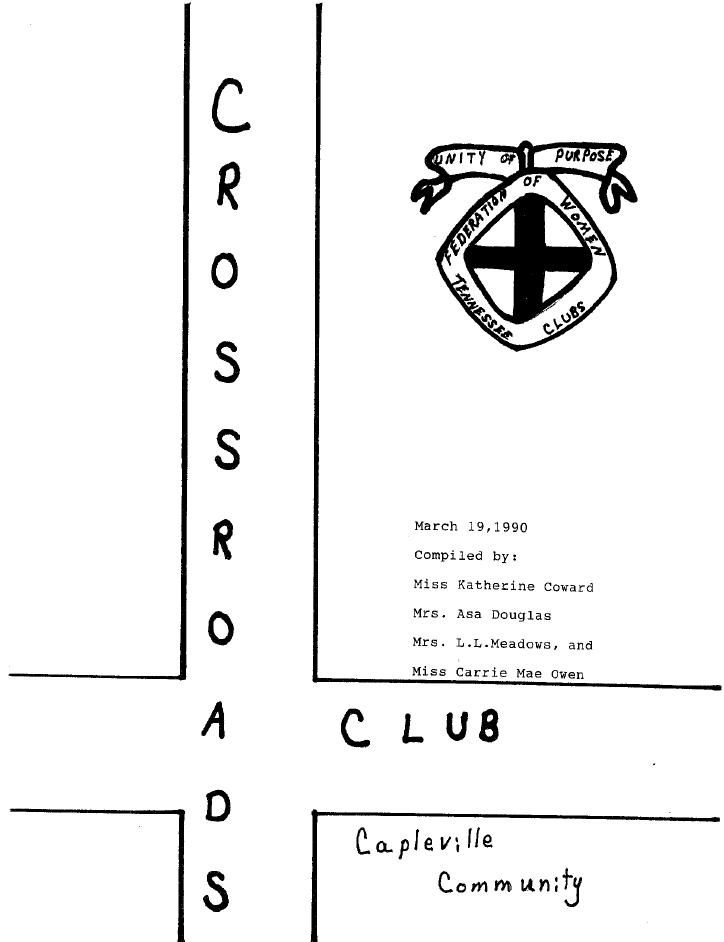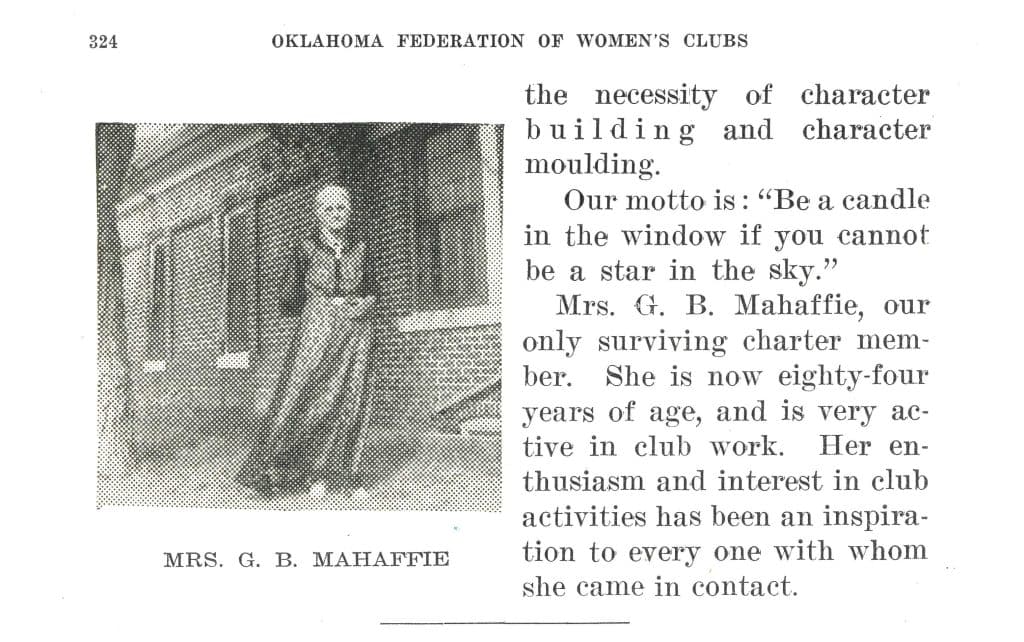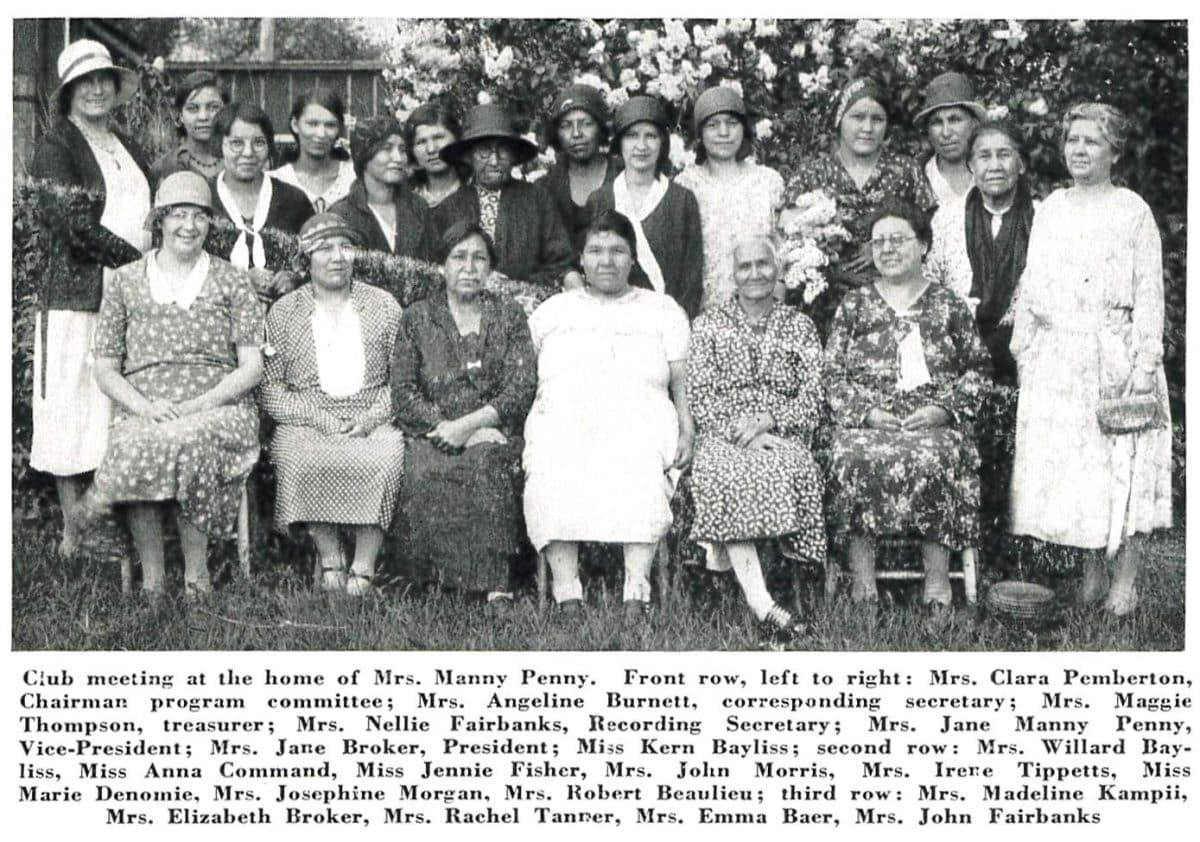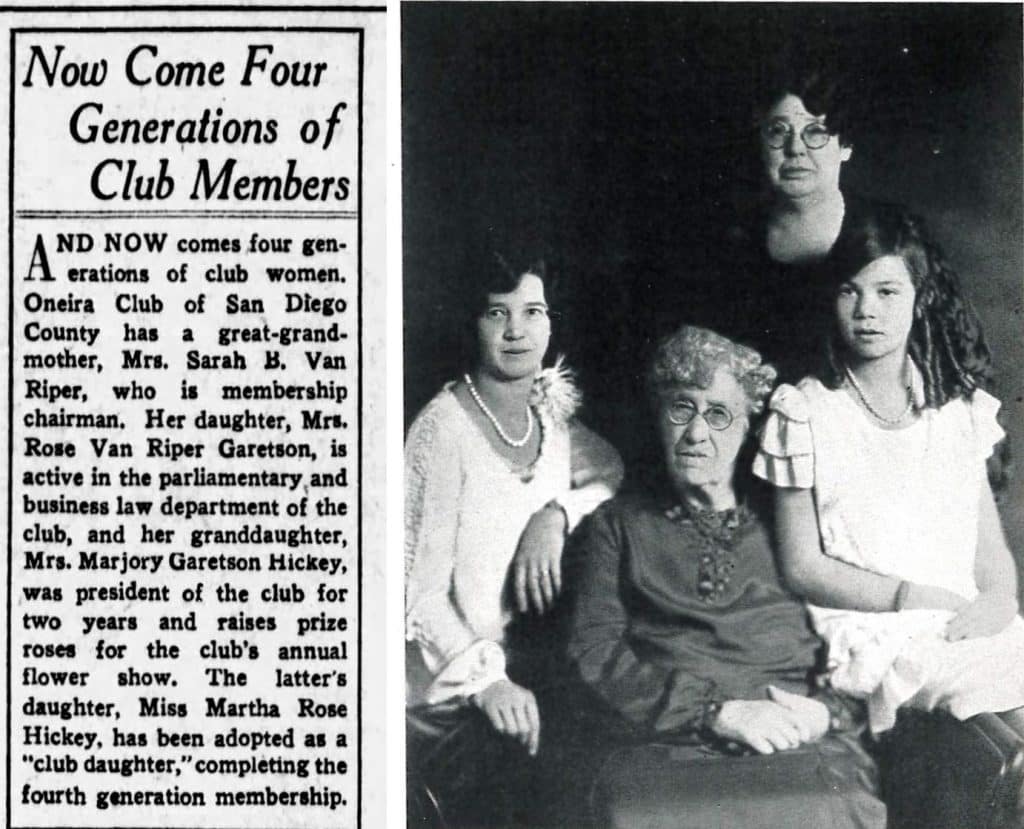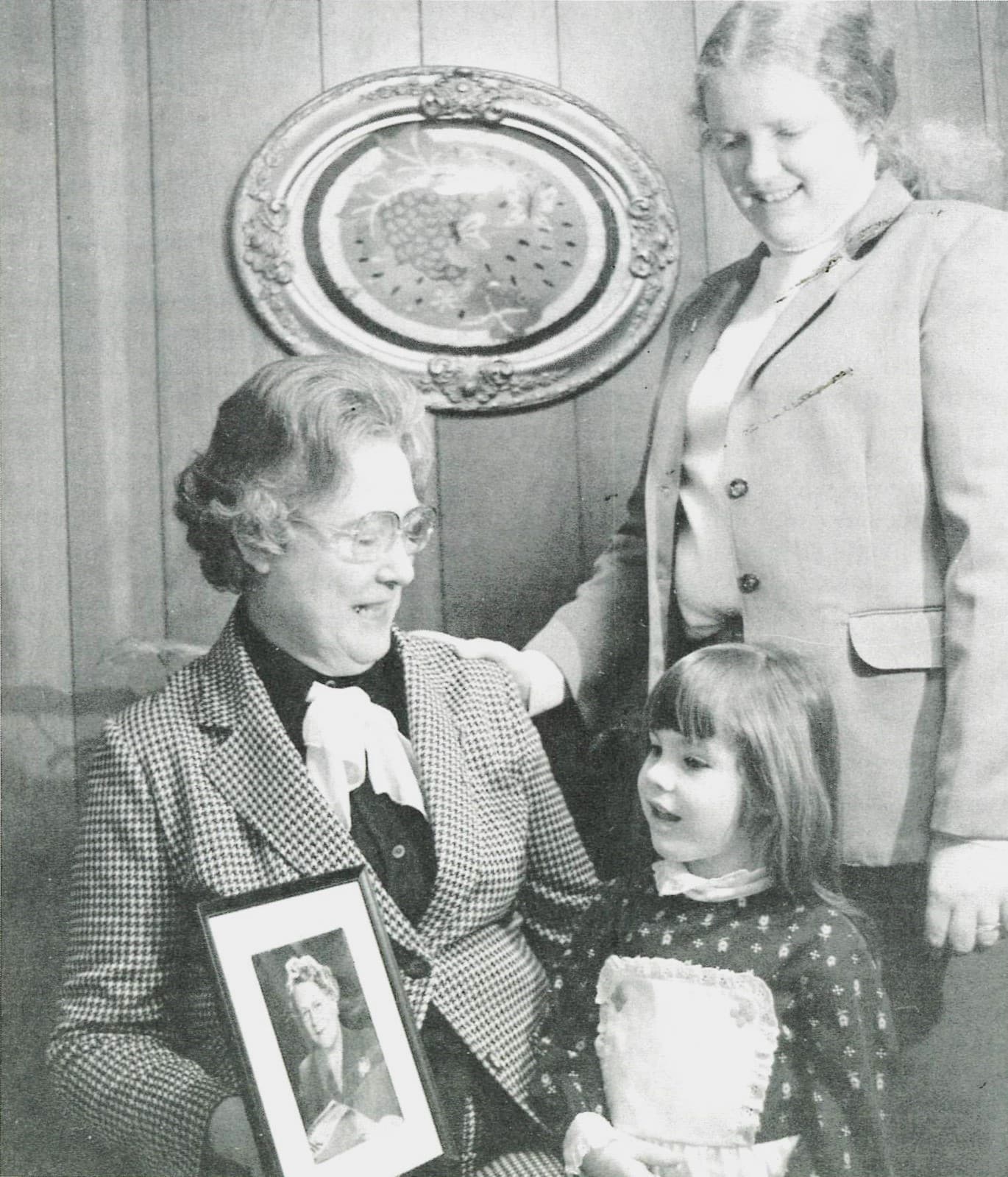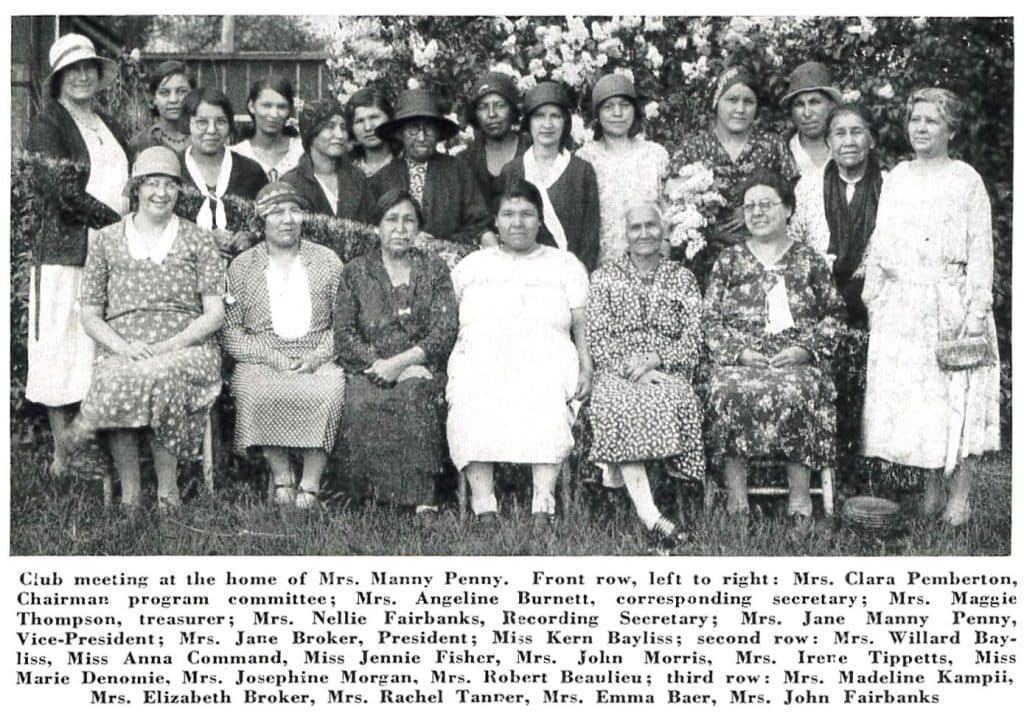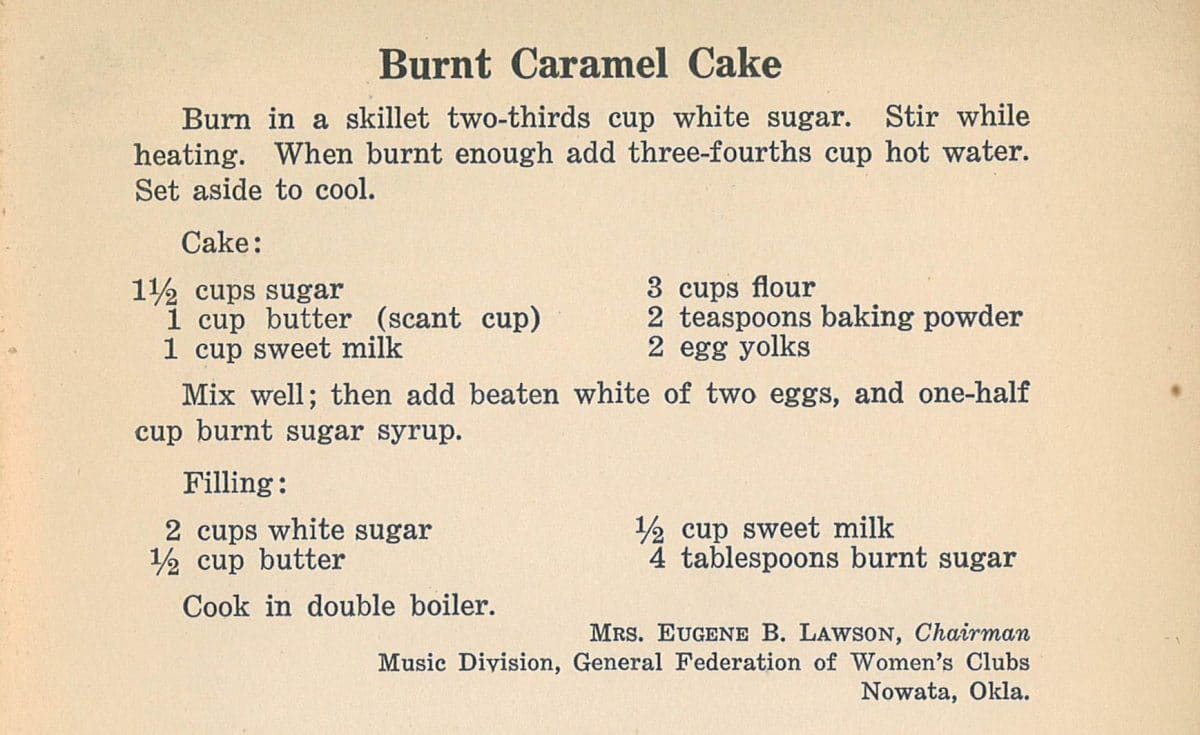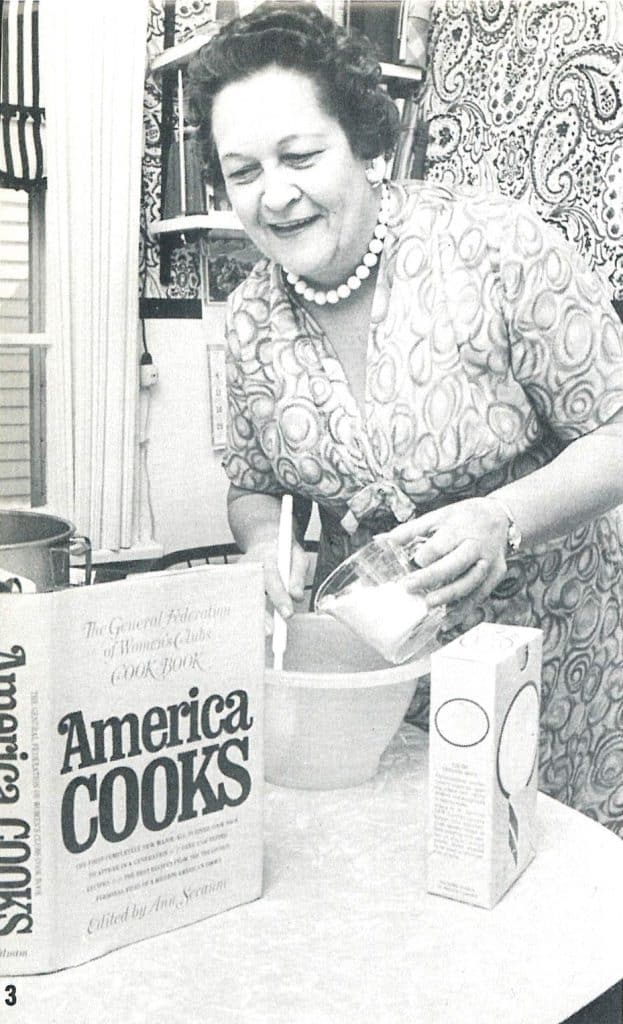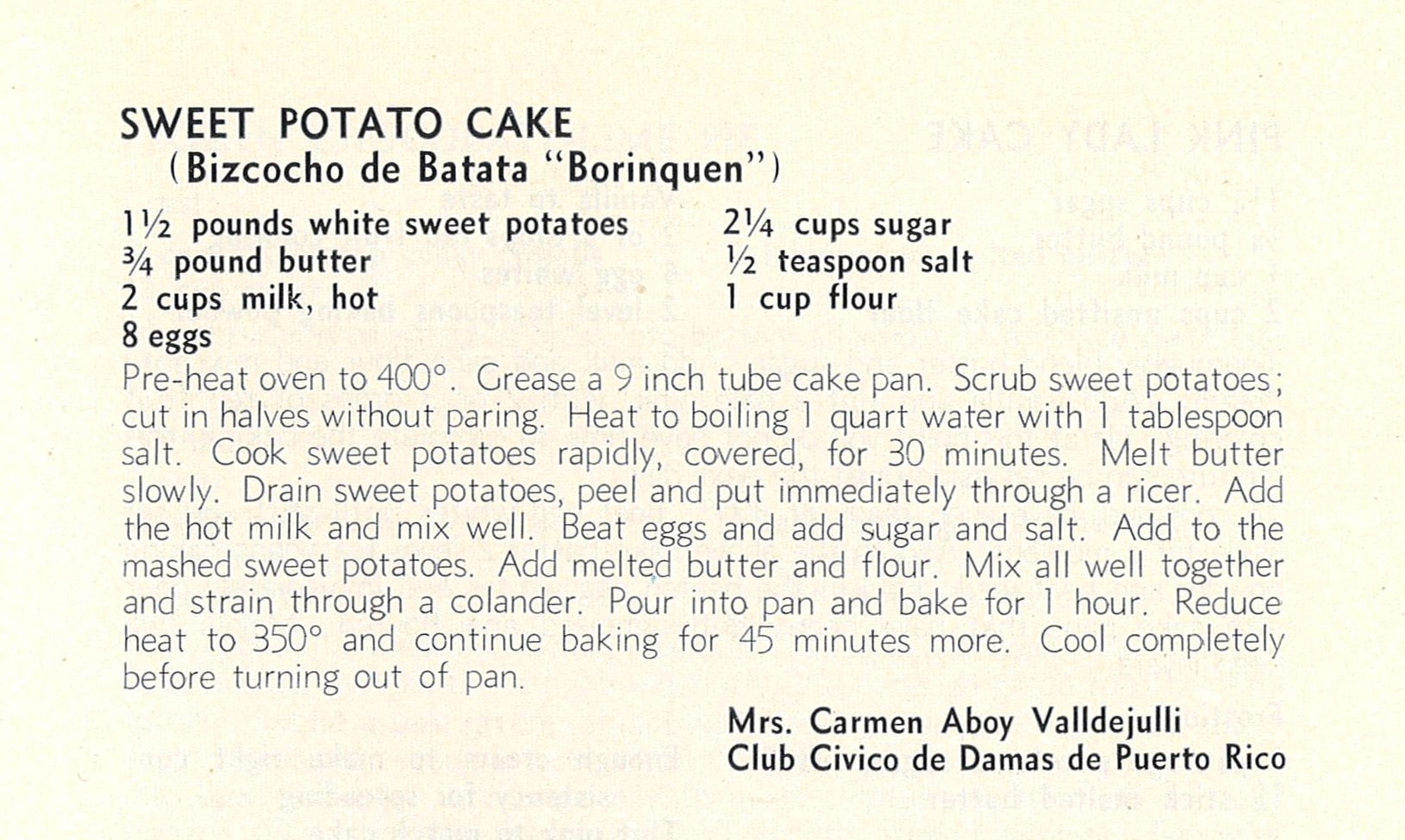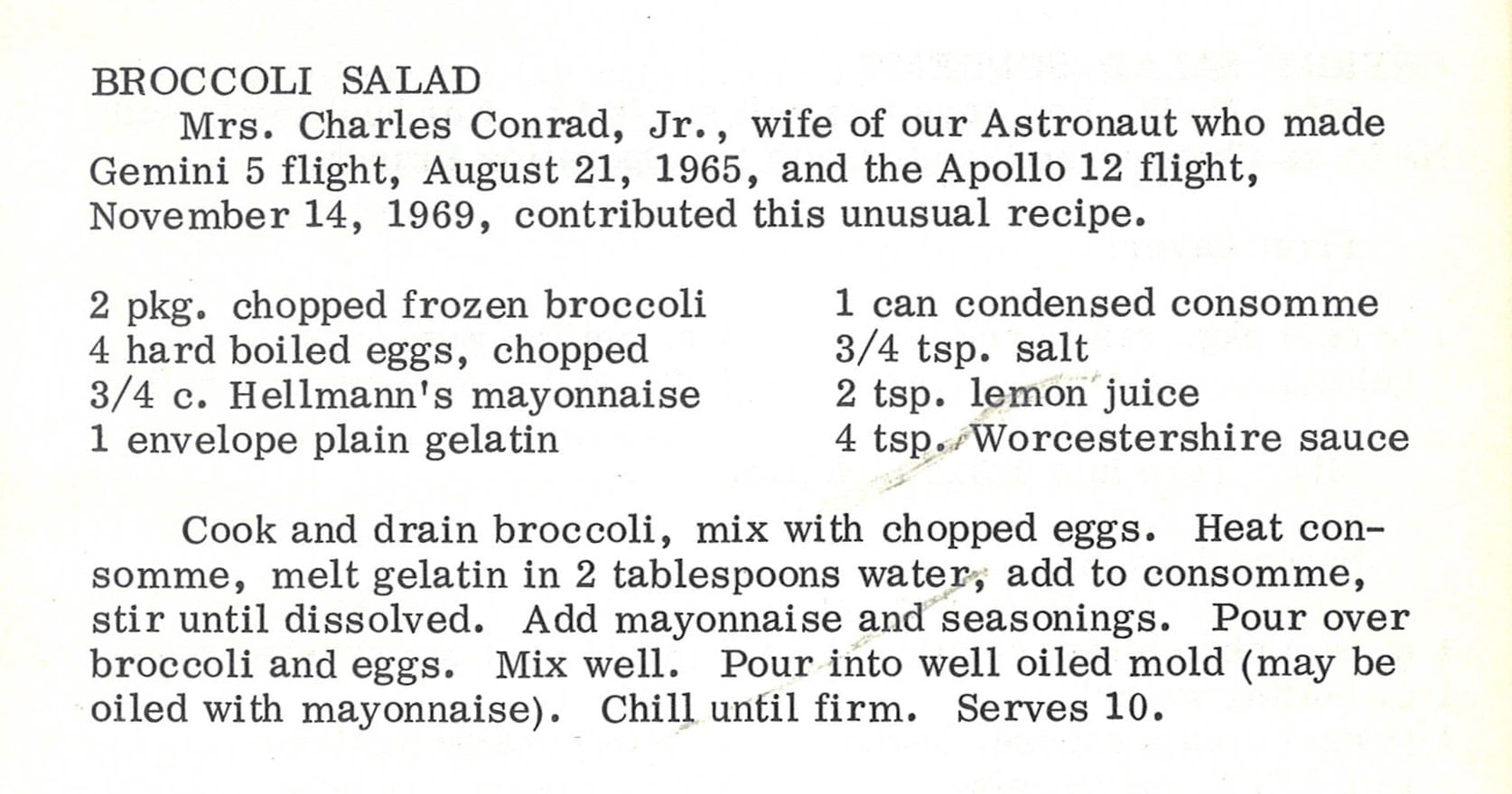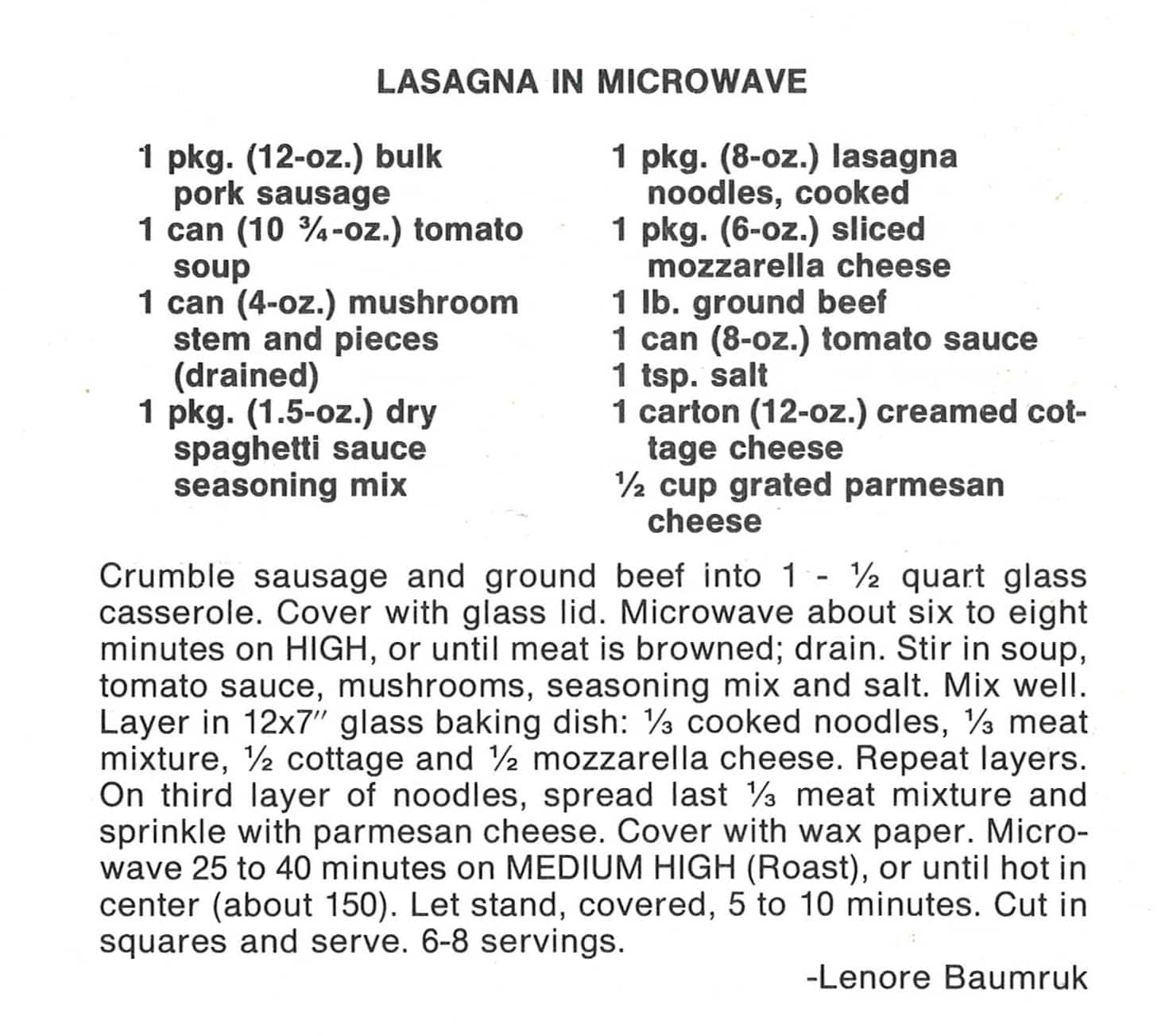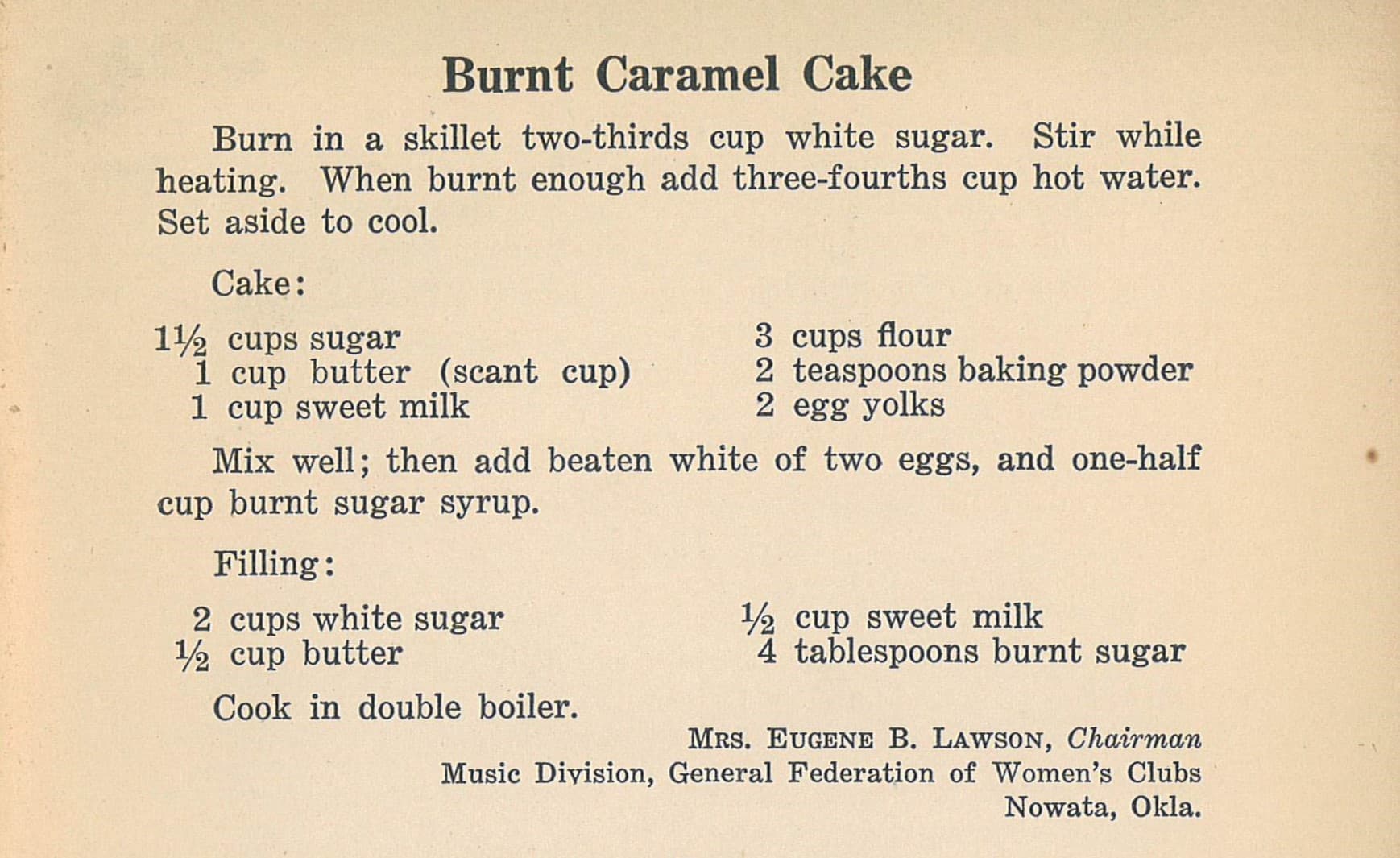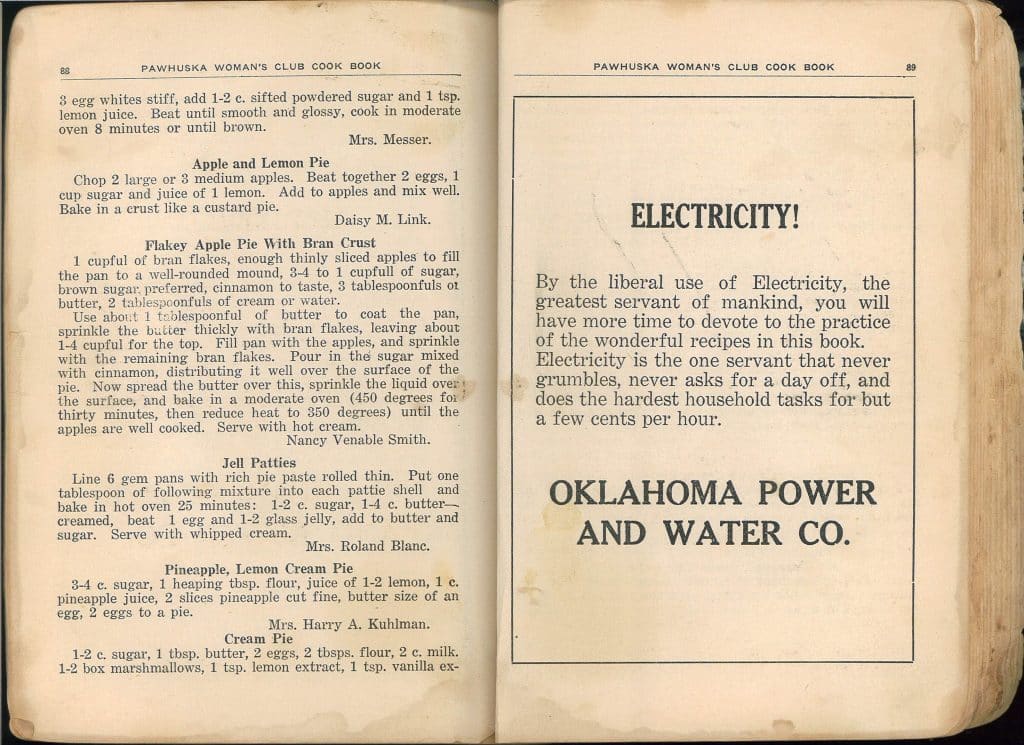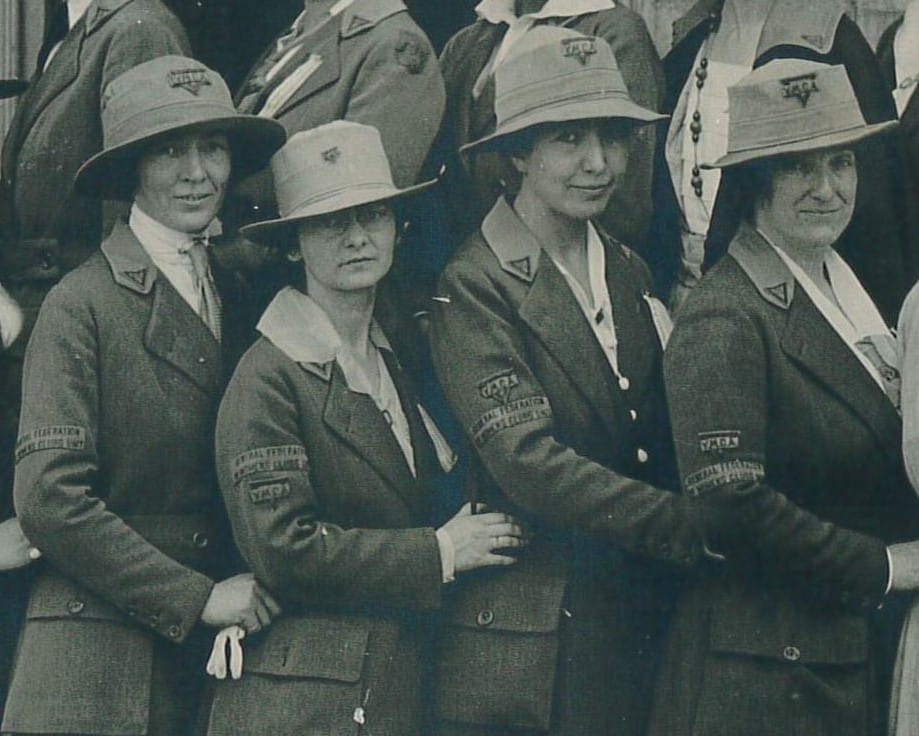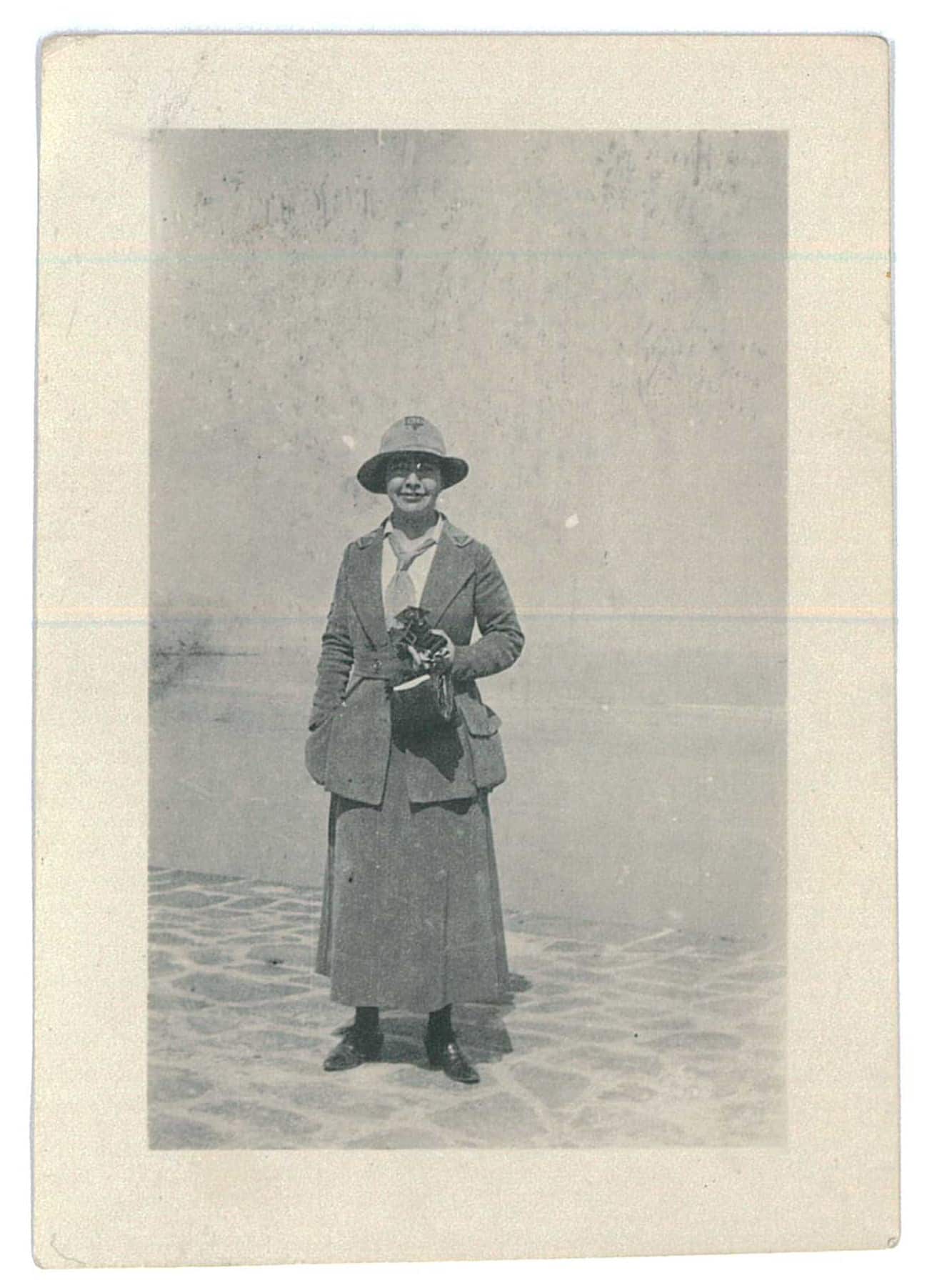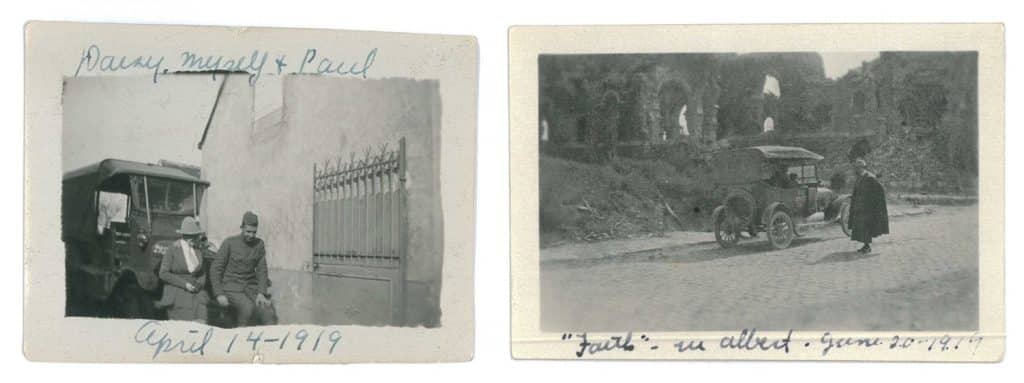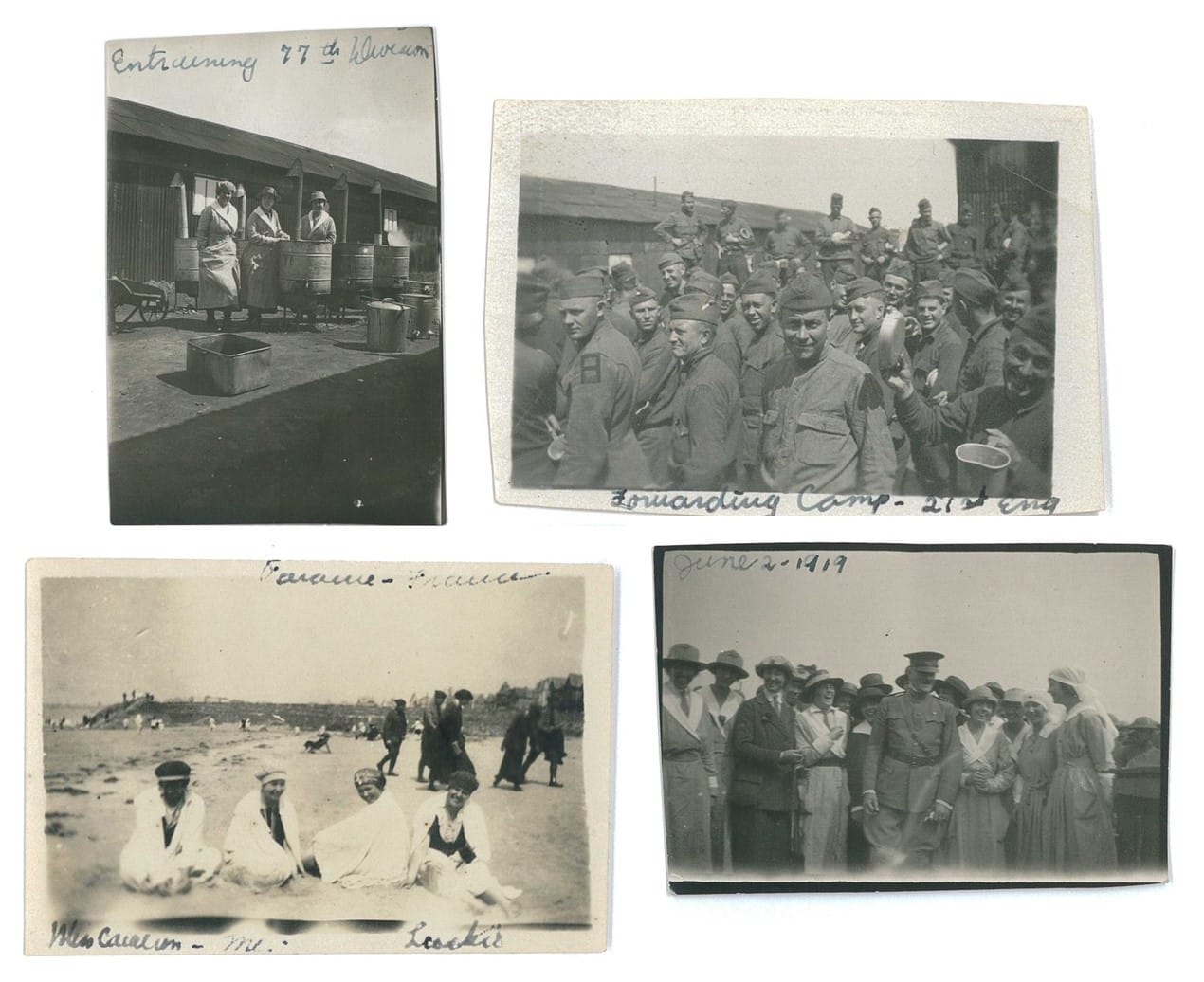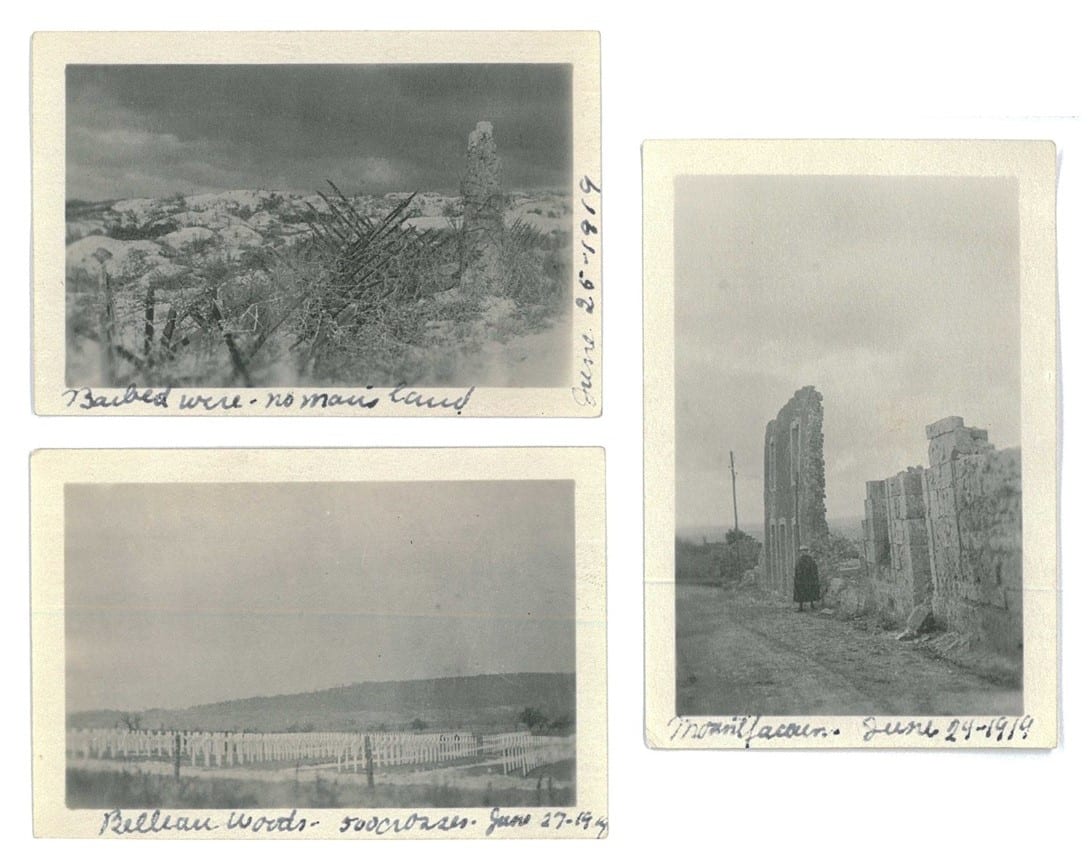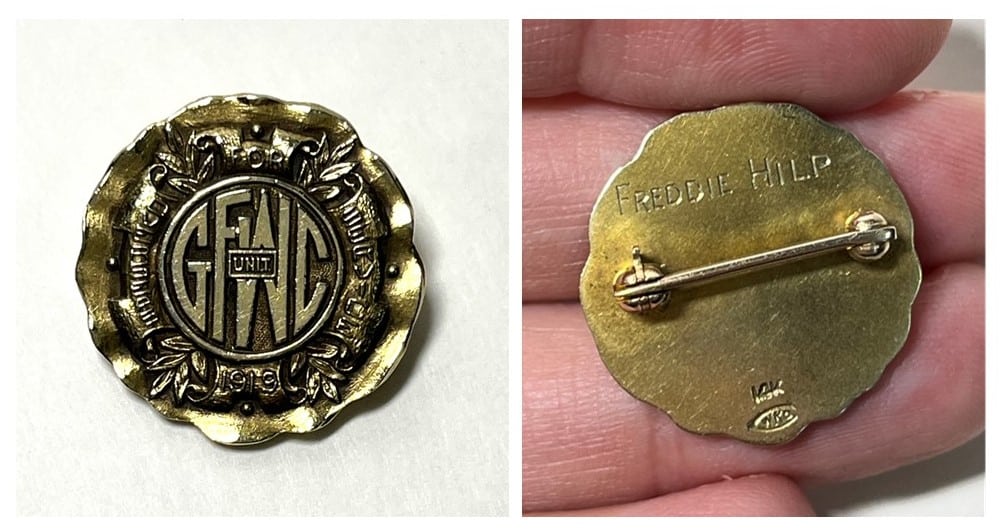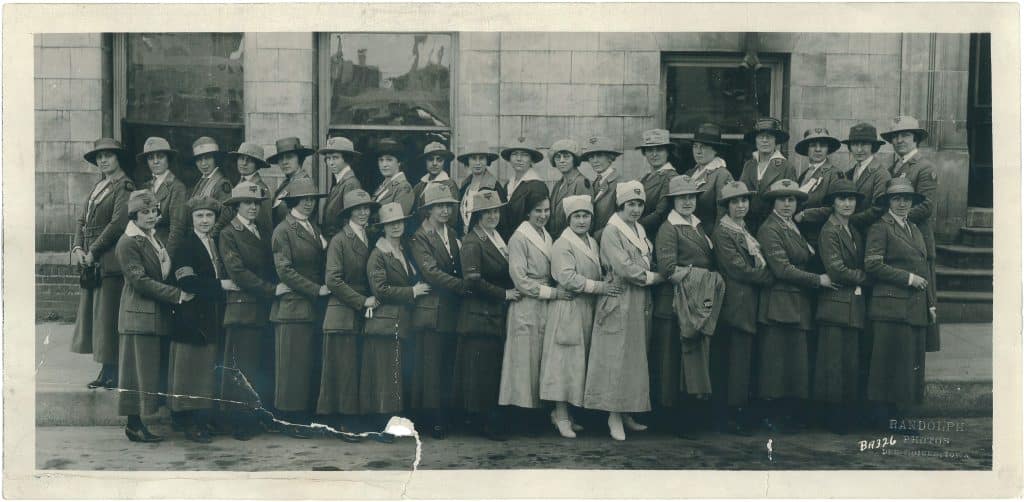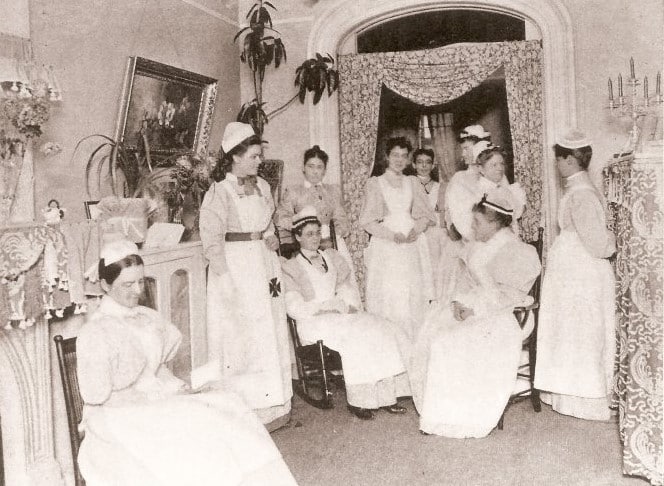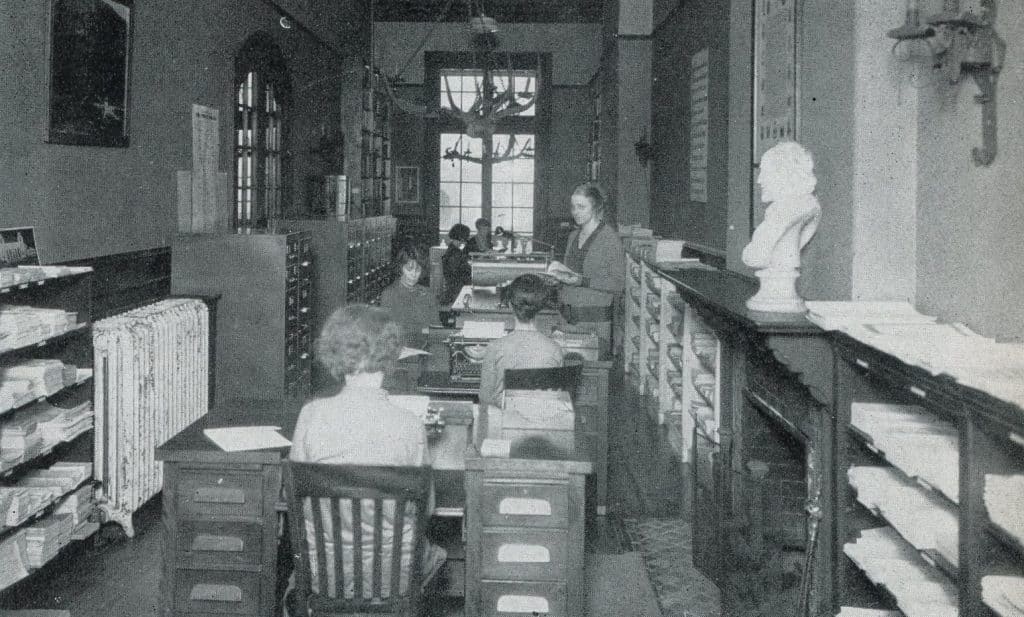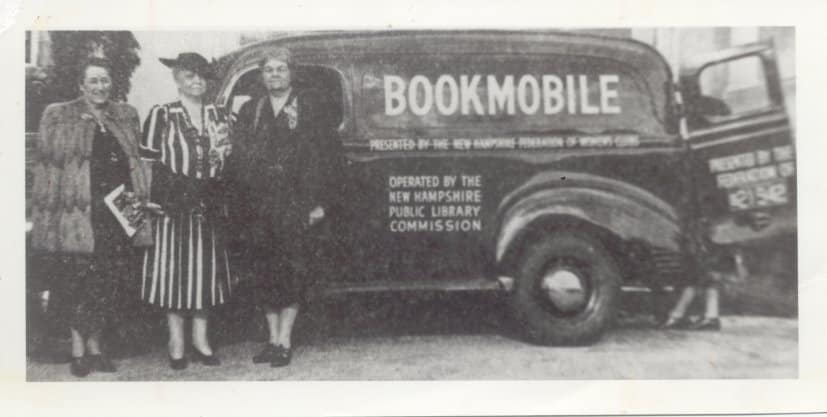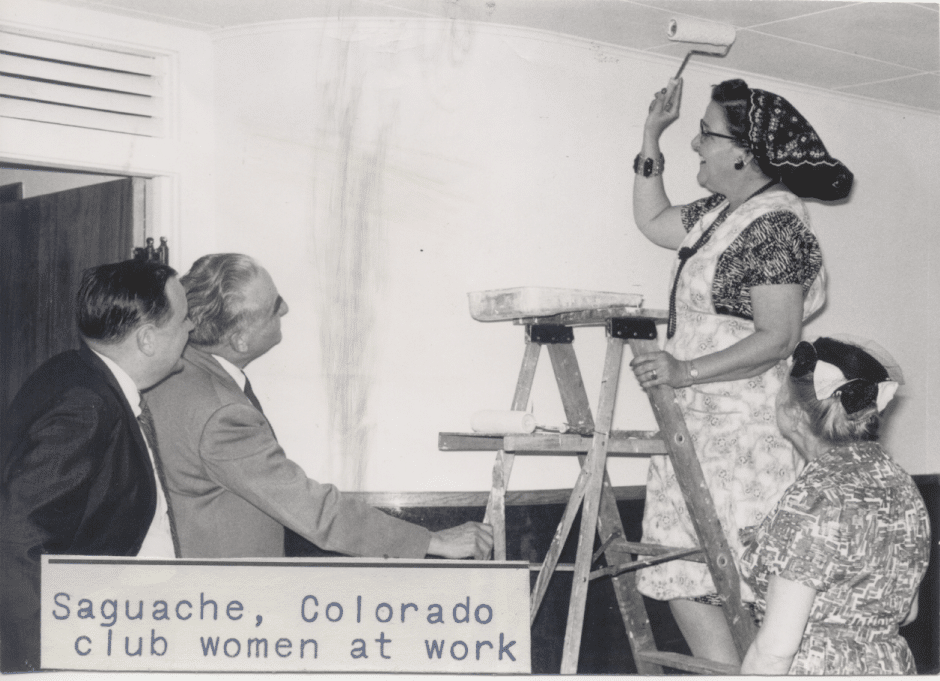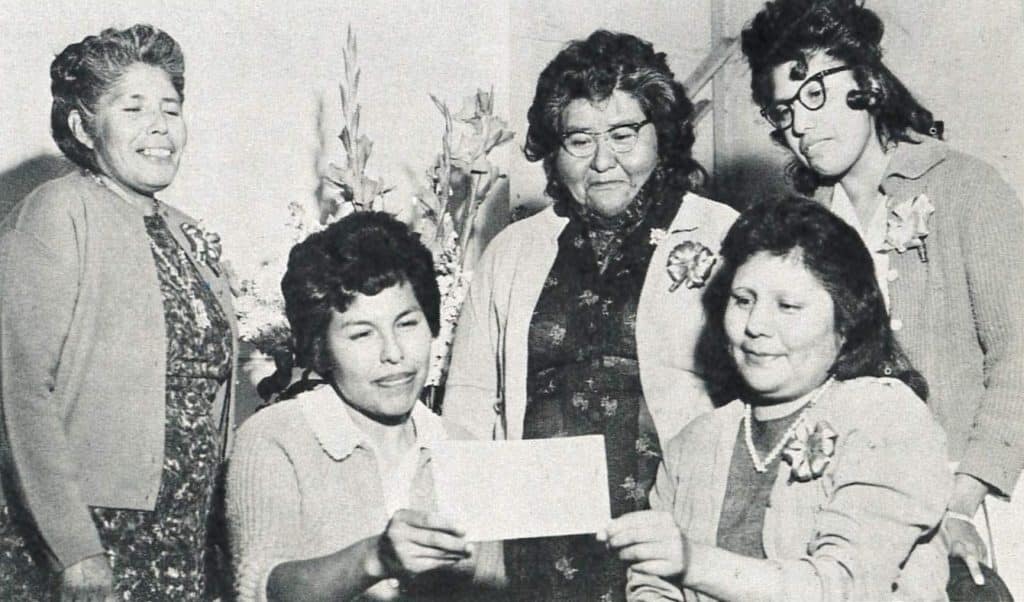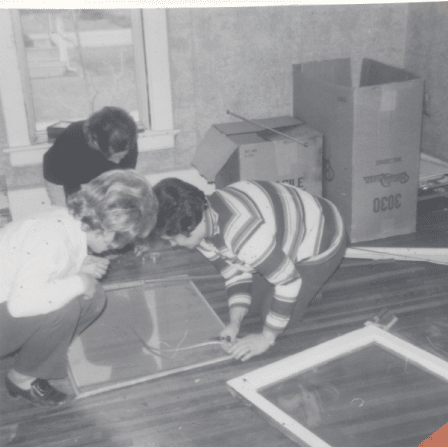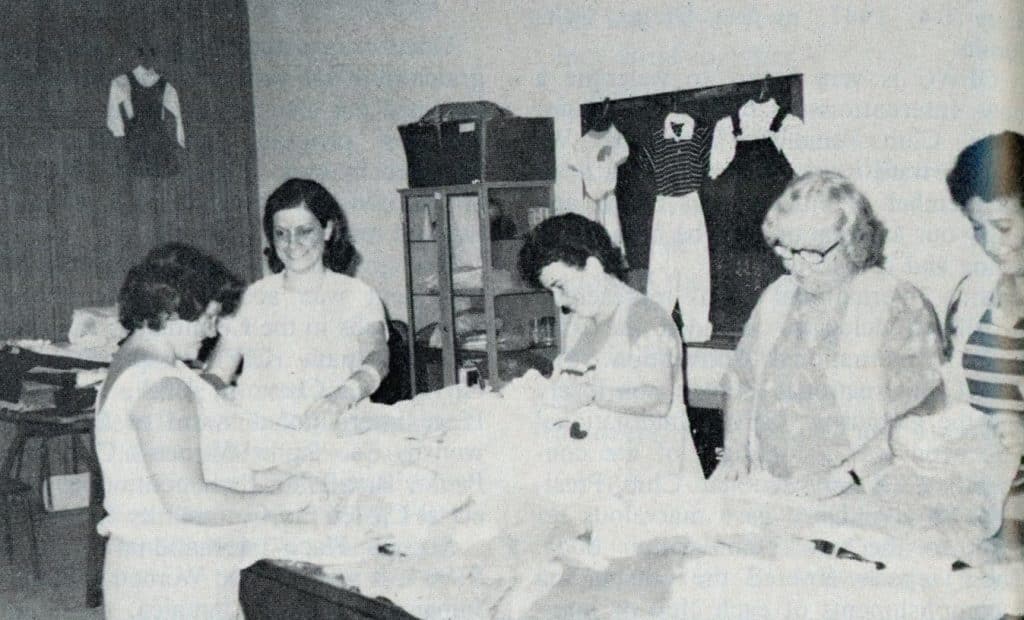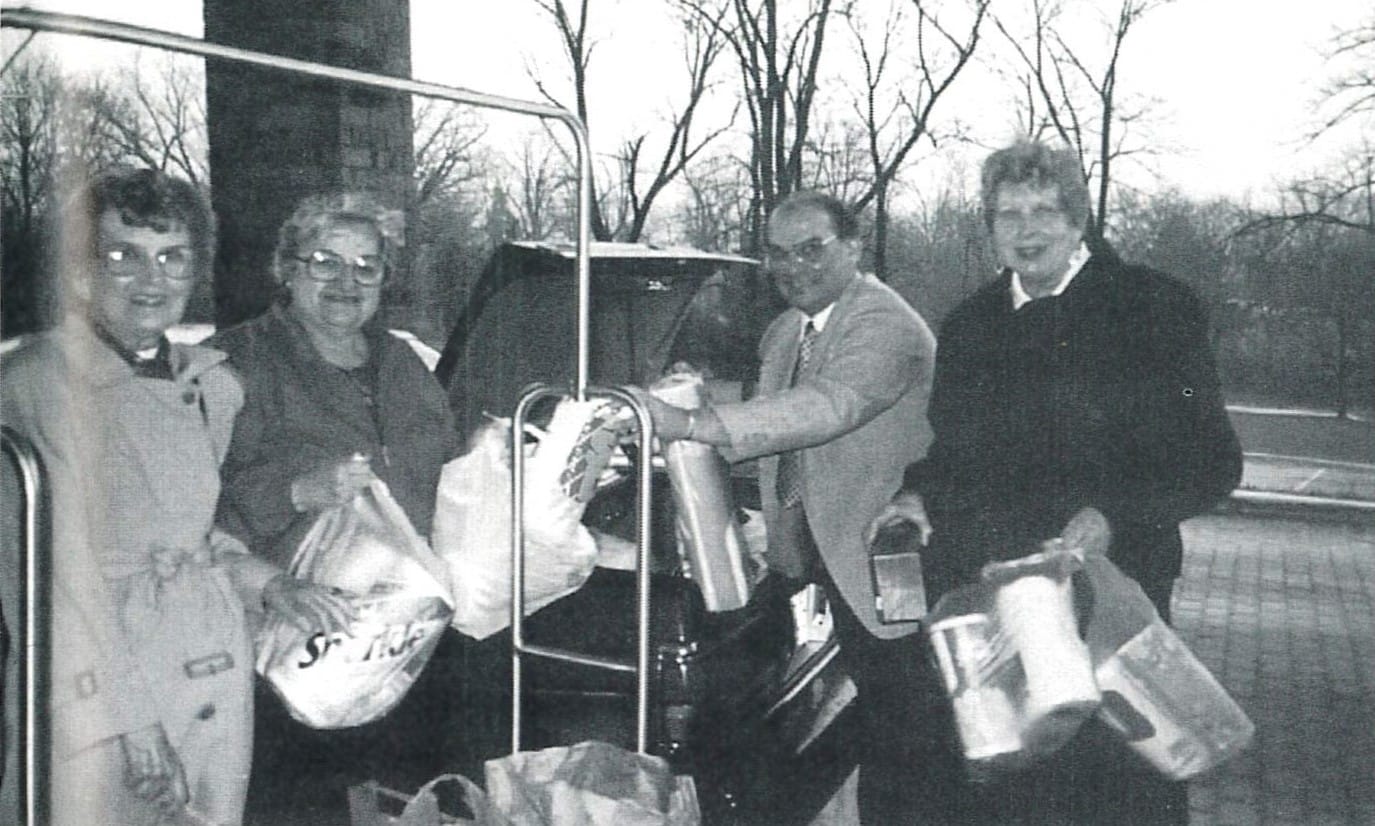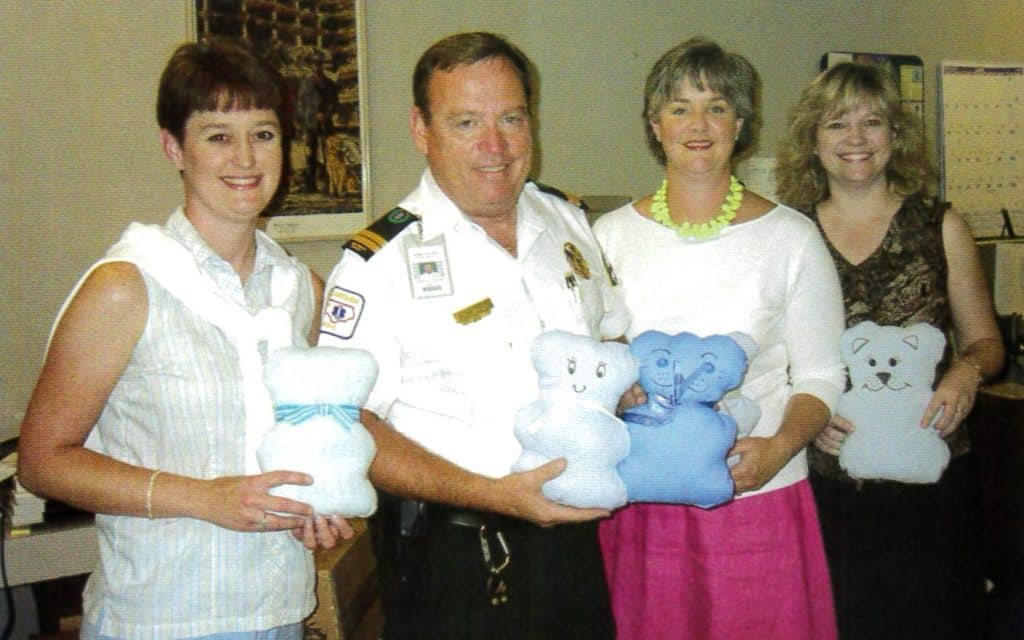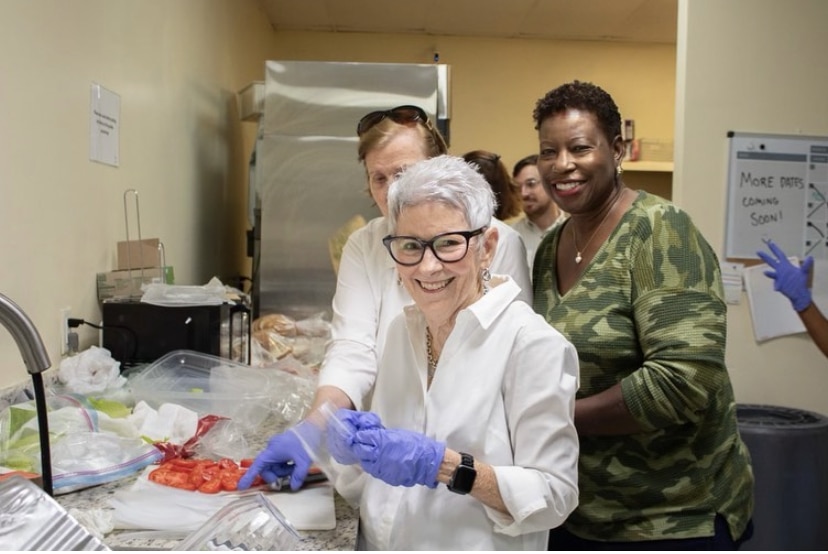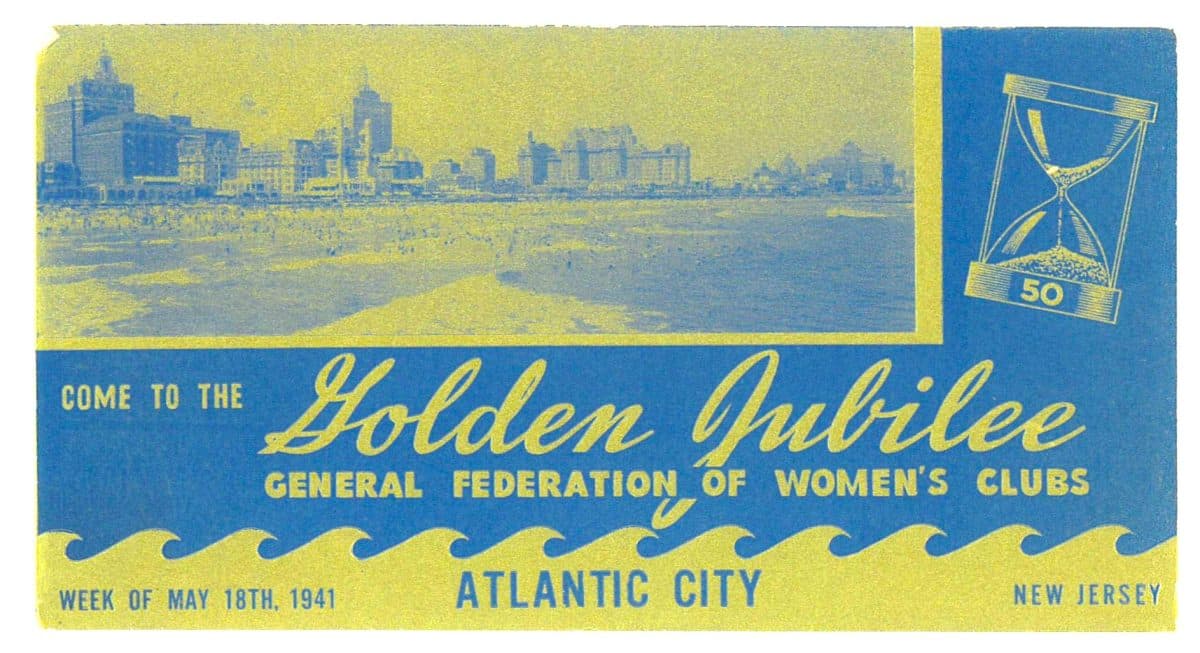
WHRC: From the Archives
Everybody Loves a Birthday Party
By: Joanna Church, Women’s History and Resource Center Librarian
The General Federation of Women’s Clubs, founded on April 24, 1890, loves a good celebration. For our fiftieth birthday, we threw ourselves a massive party (in 1941, at the end of our fiftieth year), and during this “Golden Jubilee” we went all out with parties, pageants, concerts, award ceremonies, tributes, even an ice carnival – along with our usual serious and informative sessions, not to mention officer elections plus a hotly debated vote on raising the dues. These festivities were jam-packed into six days in Atlantic City, New Jersey.
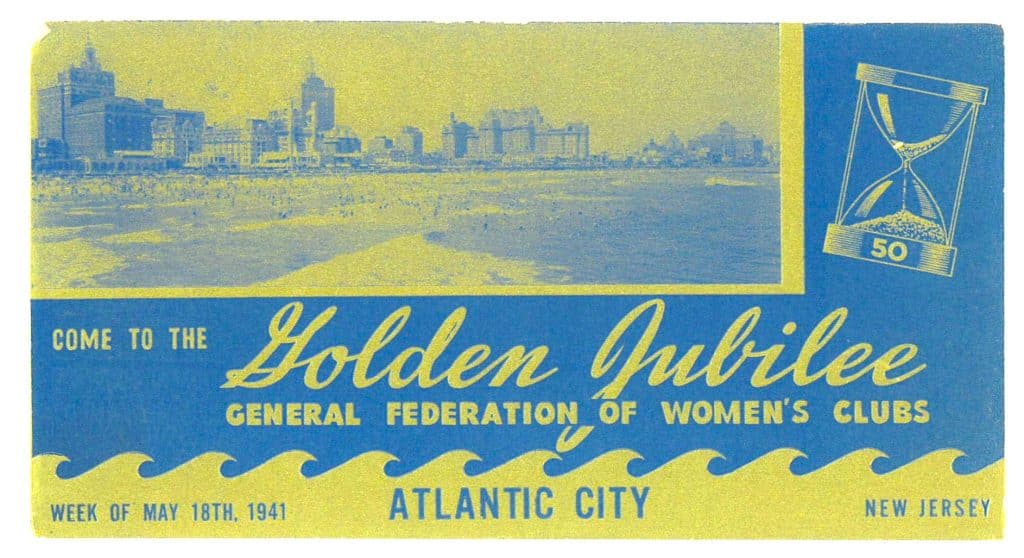
Naturally, all this activity led to a bounty of archival and photographic material for us to enjoy today in the Women’s History and Resource Center. In an effort to keep this month’s post to only a slightly overloaded page, let’s focus our attention on just one part of the Golden Jubilee collection: three scrapbooks, each with a different lens on this momentous event.
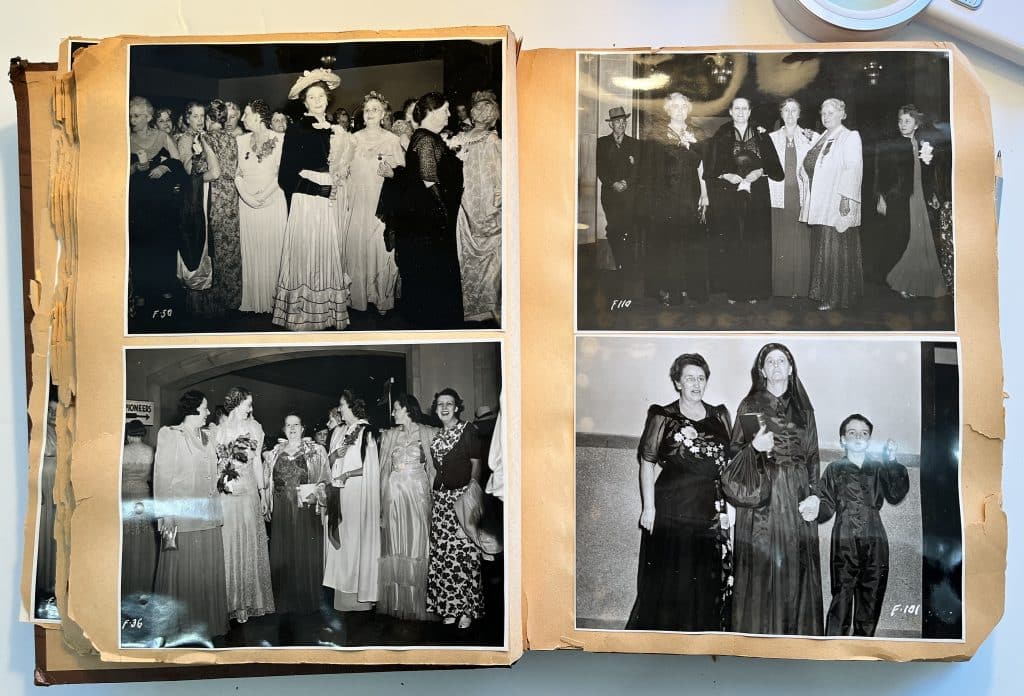
First, we have an album donated by the Oregon Federation of Women’s Clubs, containing photographs by Central Studios of Atlantic City. The outgoing GFWC President, Saidie Orr Dunbar (1938-1941), was from Oregon; the album was probably assembled on her behalf.
These photos show attendees and awardees in and around the convention. Many of the women are in costume, ready to take part in “The Long Path,” a seven (!) part historical pageant about American women’s history written and directed by Maude Wallace Schrader, Chairman of Fine Arts. Others are special guests (not necessarily clubwomen) who are shown receiving the “Scroll of Honor,” awarded by President Dunbar to “Pioneers in Various Fields” such as Frances Perkins, Helen Keller, and Jeannette Rankin.
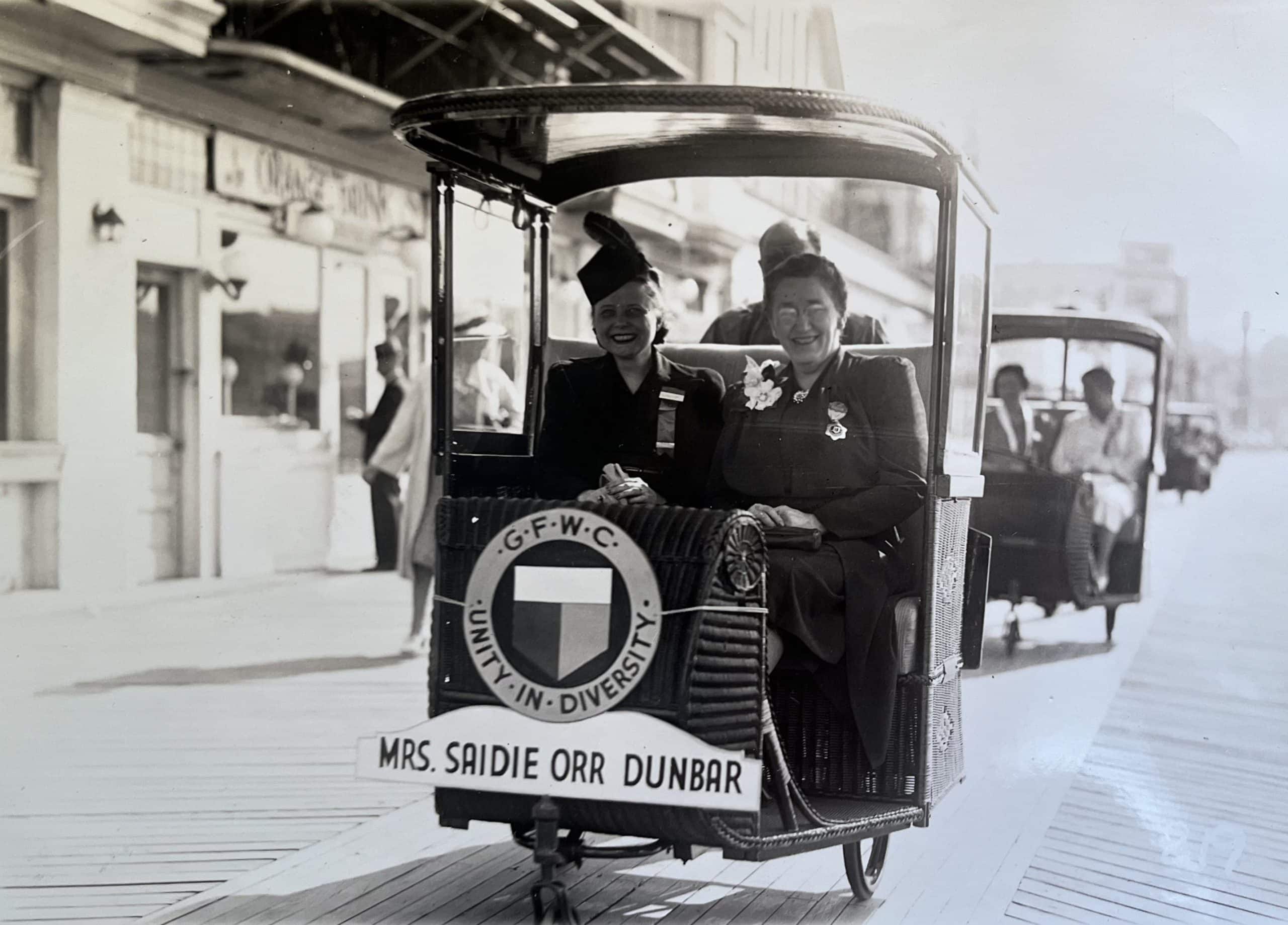
GFWC President Saidie Orr Dunbar (1938-1941), right, with an unidentified convention attendee in a personalized boardwalk jitney, Atlantic City, May 1941.
Photo by Central Studios. Anniversaries collection, ANN 1940 OS1 Book 1
President Dunbar shakes hands with Scroll of Honor recipient Cora Wilson Stewart, awarded for her work as “a pioneer in the field of literacy and adult education.”
Photo by Central Studios. Anniversaries collection, ANN 1940 OS1, Book 1
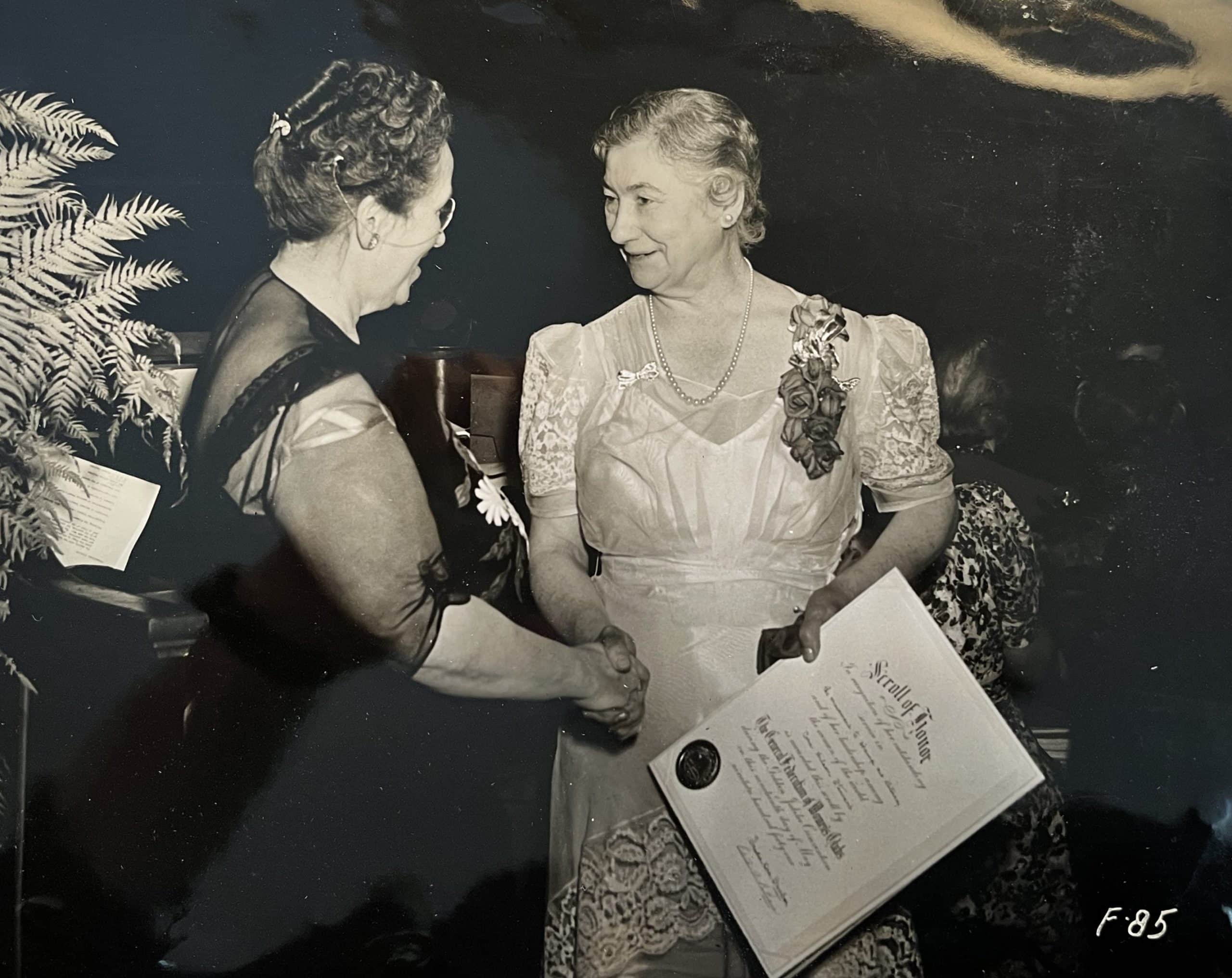

Next, we have a scrapbook that focuses on the New Jersey Federation. The book consists mostly of newspaper clippings, helpful for telling a broader story of the happenings at convention, along with a few photographs. Unlike the Oregon / Central Studios book, where the photos are firmly pasted in, here the taped-down contents are no longer attached to the pages. Scrapbooks are their own special type of conservation conundrum, but at least in this case it means that the captions written on the backs of the photos are visible to use today.

Front and back of a photo (by Fred Hess & Son) of four New Jersey Juniors, helpfully labeled in ink on the reverse. Although the handwriting is difficult to decipher – and I think this was written many years later, based on the creative spelling and a few married names that post-date 1941 – I was able to figure out that the women shown here are Arlyne Wilson Reed (later Kirk), Anne Otto Zimmerman (later Emrich), Velma Moersdorf Garrett, and Elsie Carrell (later Freud). Velma was New Jersey State Junior Chairman for 1941-1944, followed by Arlyne.
Anniversaries collection, ANN 1940 OS1 Book 2
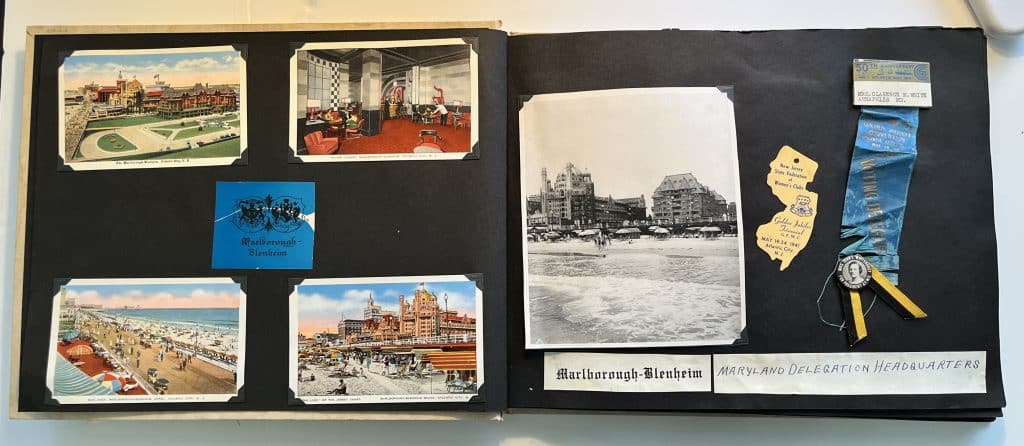
Have you made it this far in our slightly overloaded blog post? Congratulations! You now get to enjoy the third of our Golden Jubilee albums, which is simply a delight. Chock full of ephemera, souvenirs, and personal touches, this scrapbook was created by Evangeline Kaiser White (1885-1974), a member of the Woman’s Club of Annapolis and Anne Arundel County (Maryland), to commemorate what was clearly a special and important occasion. White included her Voting Delegate ribbon, complete with campaign button for Maryland’s own Sara Anderson Whitehurst for President; postcards of (and her receipt from) the Maryland delegations hotel, the Marlborough-Blenheim; event programs and invitations; a handwritten version of her post-convention club report; corsage ribbons; a souvenir pencil; a thank you note from the Confidential Secretary of the Mayor of Atlantic City to another Annapolis clubwoman, who had complimented Mayor Taggart on the city’s jitney service; and, of course, the typical newspaper clippings and photos. Seriously, this album is fantastic.
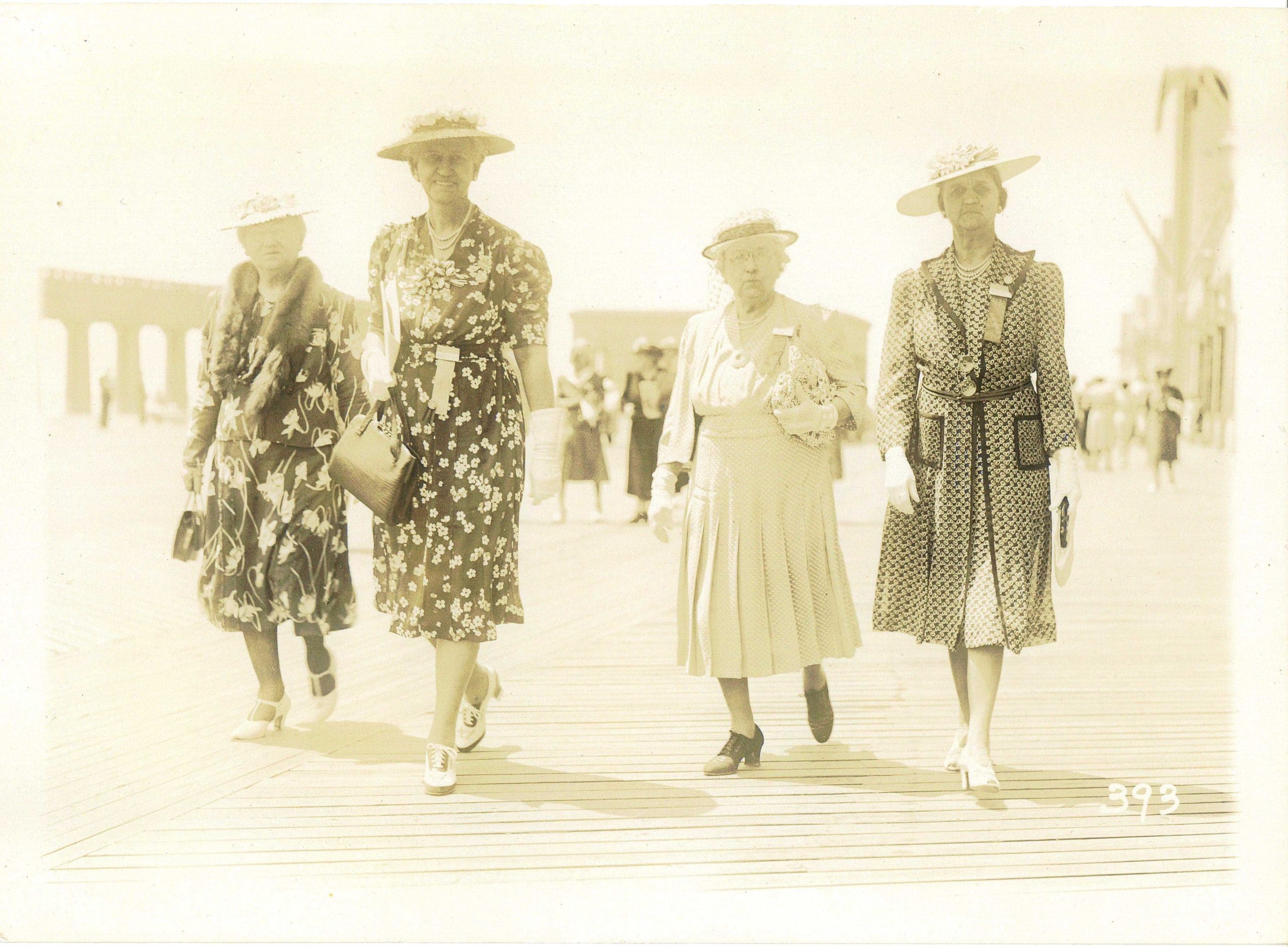
This boardwalk photo was carefully captioned by Mrs. White: “Left to Right: Miss Margaret Martin (guest), Mrs. Clarence M. White (Delegate), Mrs. Simon Martin (guest), Mrs. Bernard Wells (guest).”
Anniversaries collection, ANN 1940 OS2 Book 3
One of two small envelopes pasted into the album, this one holding the remains of corsages from “Lil, Liza and Mag” and “Mazie, Lillian and Mabel.” She wrote, “Corsages of orchids and golden roses sent by my club sisters who were in Atlantic City with me. Great days we had!” I would really like Lil, Liza and Mag” to be the women shown in the photo above, but while we have a Margaret and an Eliza (Mrs. Bernard Wells), I can’t find a Mrs. Simon Martin in Maryland in 1941 so I don’t know if her name was Lillian.
Anniversaries collection, ANN 1940 OS2 Book 3
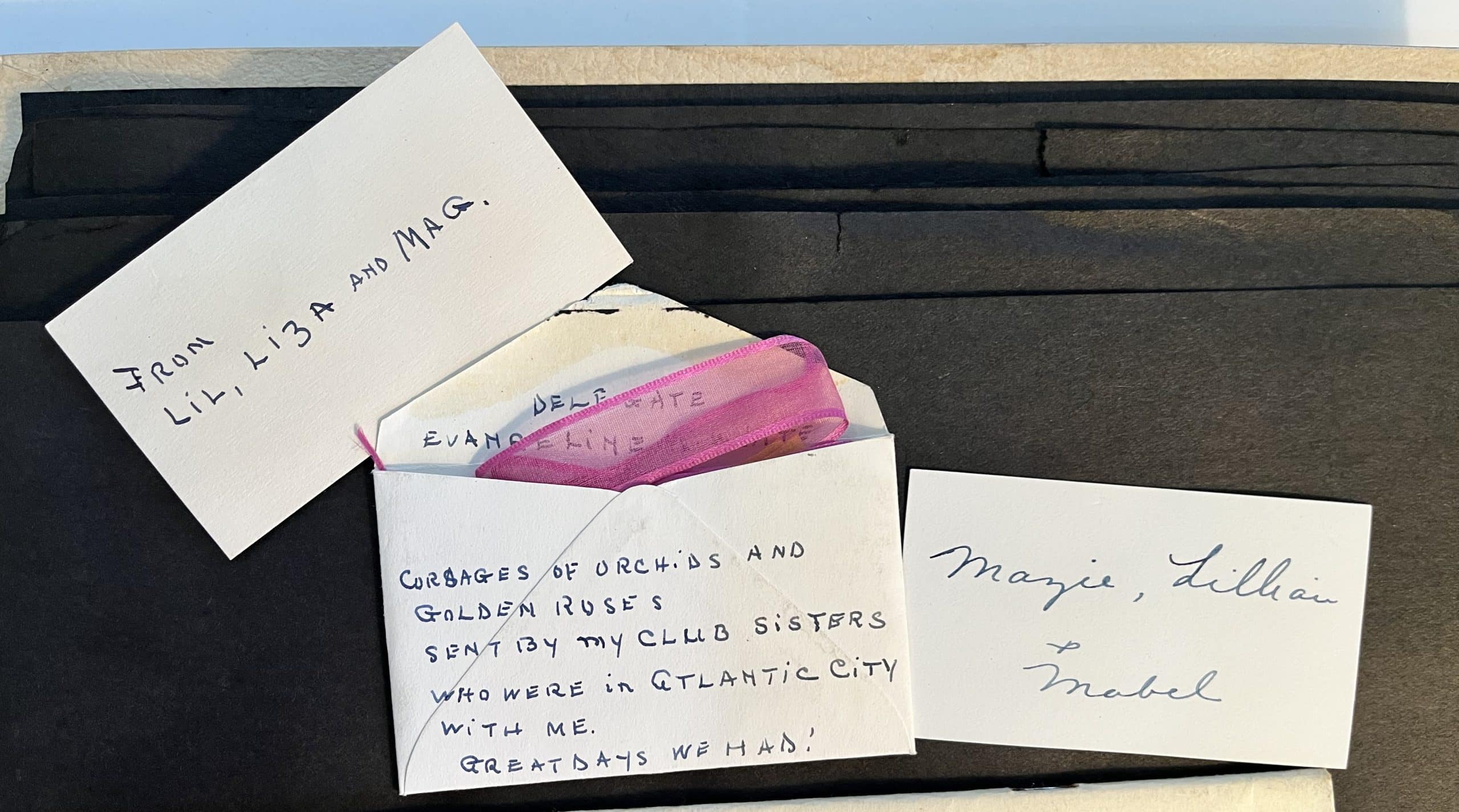
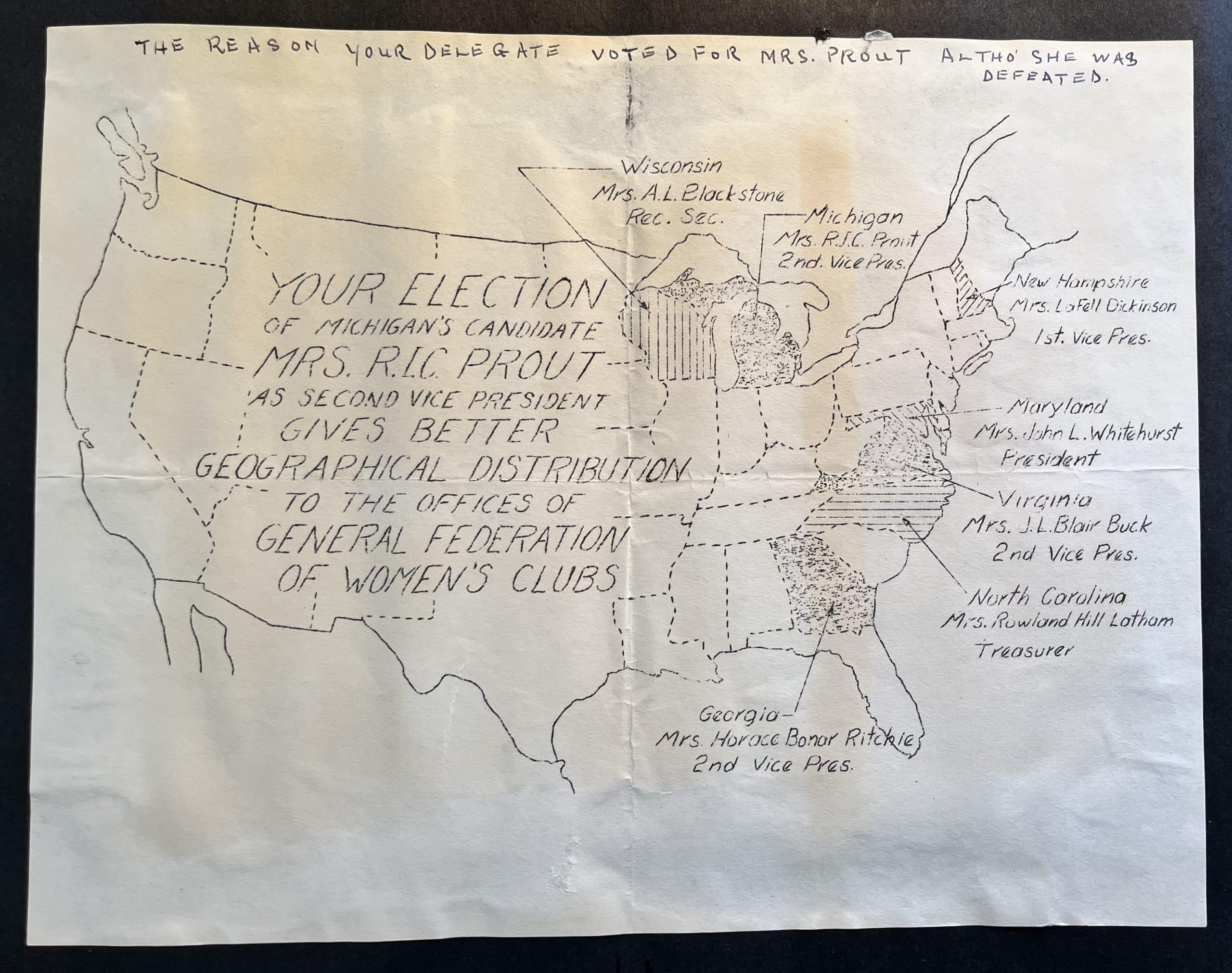
In a rare instance of an individual clubwoman’s voting preferences being recorded, the album includes this flyer advocating for the election of Mabel Prout of Michigan as Second Vice President to achieve “better geographical distribution” of office-holders, with a note by Mrs. White telling us that it swayed her vote. Prout was defeated in this instance by Dorothea Blair Buck of Virginia, but don’t worry, she went on to serve as GFWC President from 1956 to 1958.
Anniversaries collection, ANN 1940 OS2 Book 3
Well, I could go on for a long time about these three scrapbooks (not to mention the other Golden Jubilee materials) but I’ll end here with a note about the importance of having multiple lenses on a single event. There is some overlap in content between these three books, and between them and the rest of our Jubilee collection, but they are complementary rather than duplicative, offering additional information and context. Here’s just one example of that. The New Jersey album includes the Hess & Son photo on the left, which is labeled simply “2 oldest NJ Fed members.” However, in the Maryland album Mrs. White conveniently included a newspaper clipping with the same photo, captioned with their names:
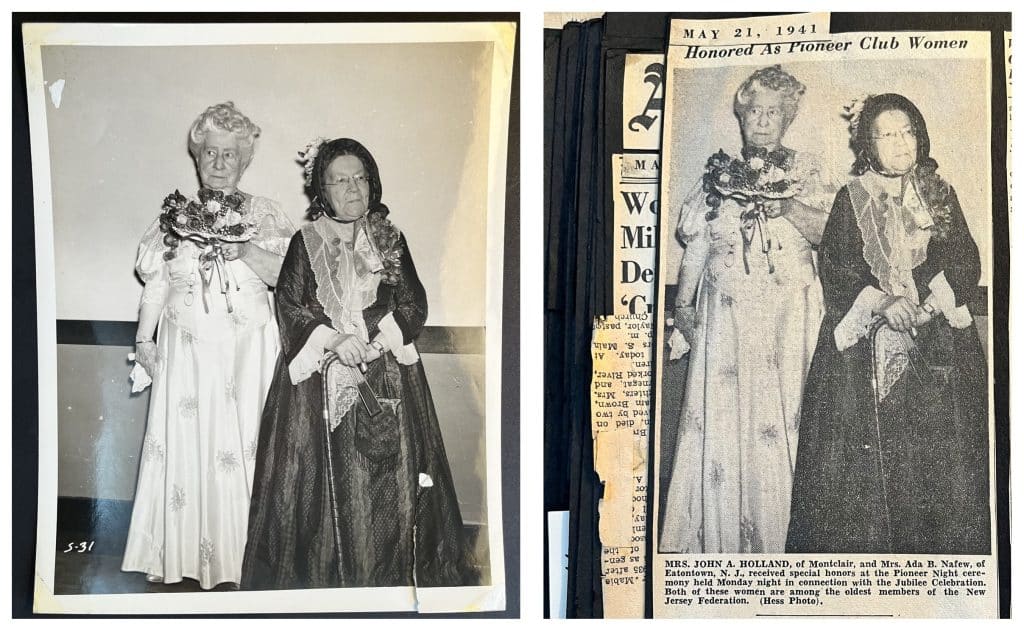
Thus we know that the women shown here are Cecelia Gaines Holland (71 years old at the time) and Ada Byron Nafew (87 years old), recipients of the state’s Gold Medal Pioneer Clubwoman medals. (The Pioneer Clubwoman award deserves its own blog post, so keep an eye on this space.) In Mrs. Nafew’s case, having her name takes us to much more information about her long life and career.
April 24th is celebrated each year as GFWC Federation Day. Later this month, the General Federation of Women’s Clubs will turn 135 years old. Proud as we are to have reached this milestone, we’re not planning a big blow-out celebration. But perhaps with these Golden Jubilee examples, some of our member clubs might throw themselves a little 135th birthday party? If so, let us know how you’re celebrating!
Everybody loves a birthday party, especially when you can “commemorate FIFTY GLORIOUS YEARS OF ACHIEVEMENT”! …Excerpt from one of the planning brochures sent out to GFWC member clubs in the lead-up to the Golden Jubilee year.
Programs collection, PRO 1938-1941 f46
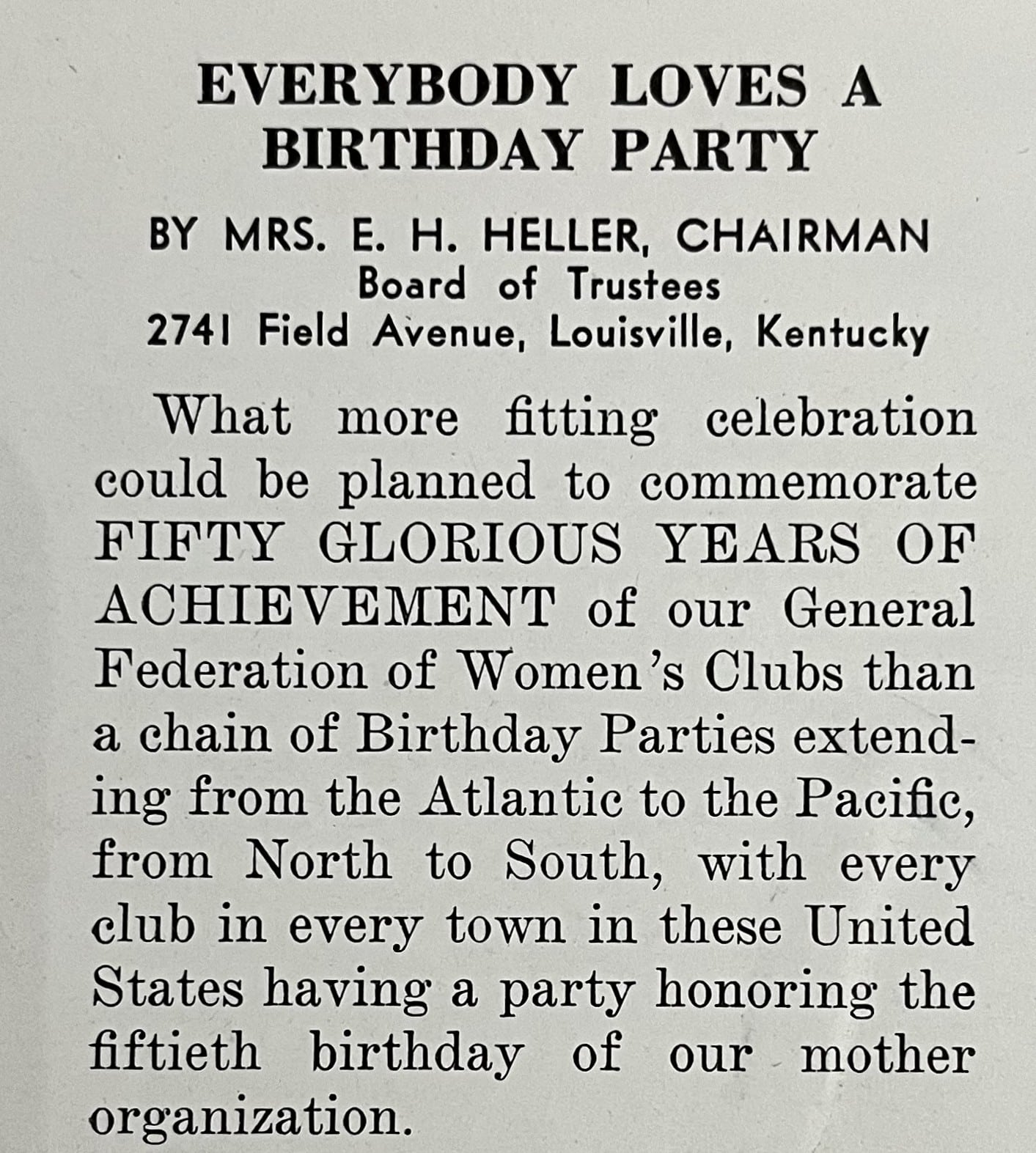
Remember to check back next month for more stories from GFWC history (and present)! To learn more about the WHRC collections, visit the WHRC page or contact us at whrc@gfwc.org.
Joanna Church is the Women’s History and Resource Center Librarian at GFWC Headquarters in Washington, DC. She oversees the WHRC collection, handles research requests, and loves sharing our unique resources with fellow lovers of women’s history.
Learn More about the WHRC
The Women’s History and Resource Center
